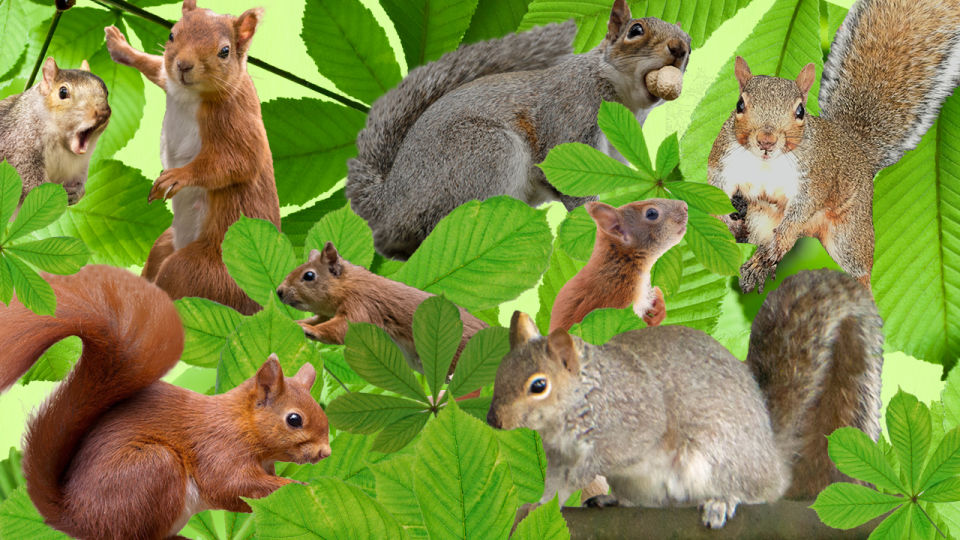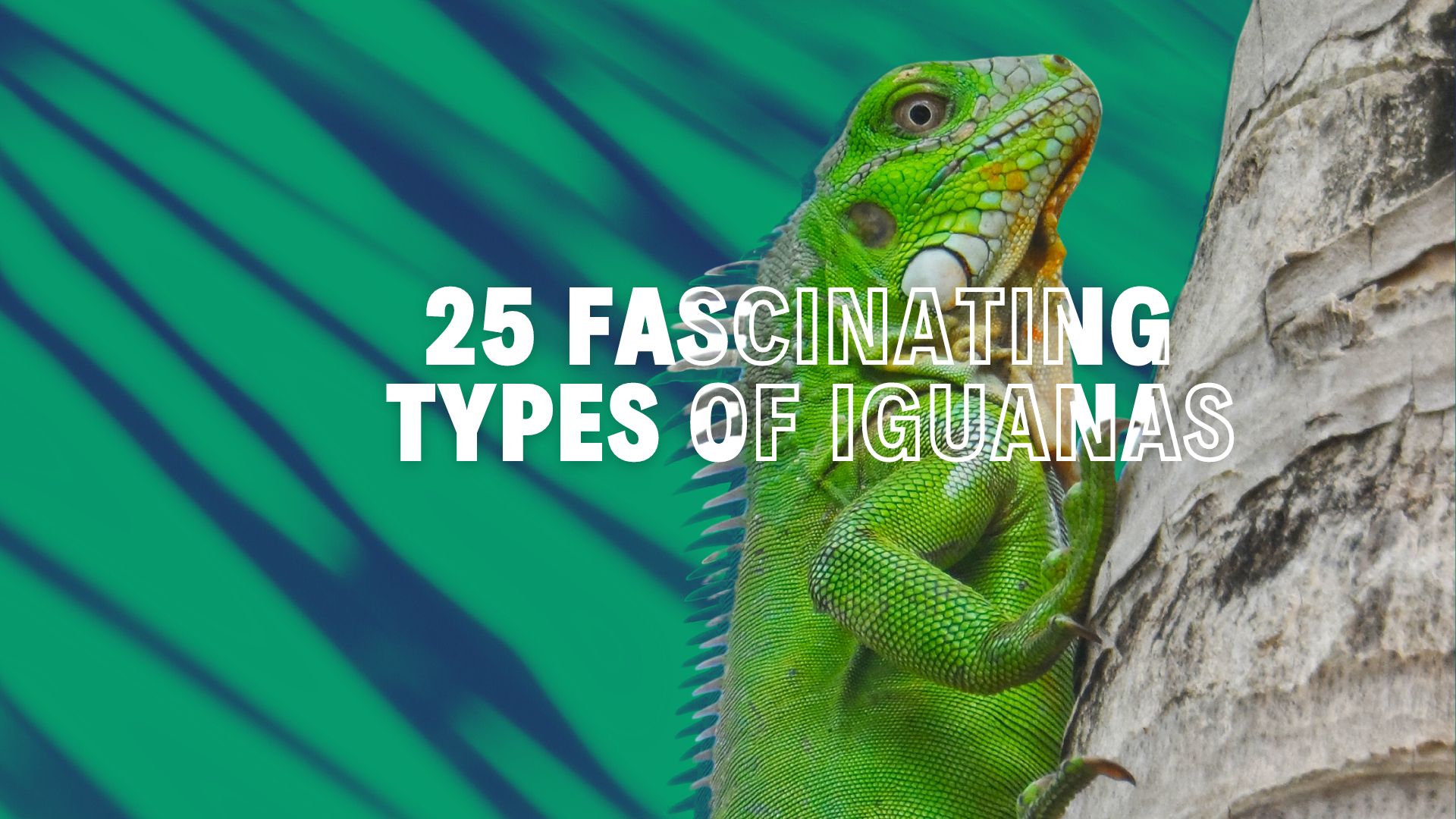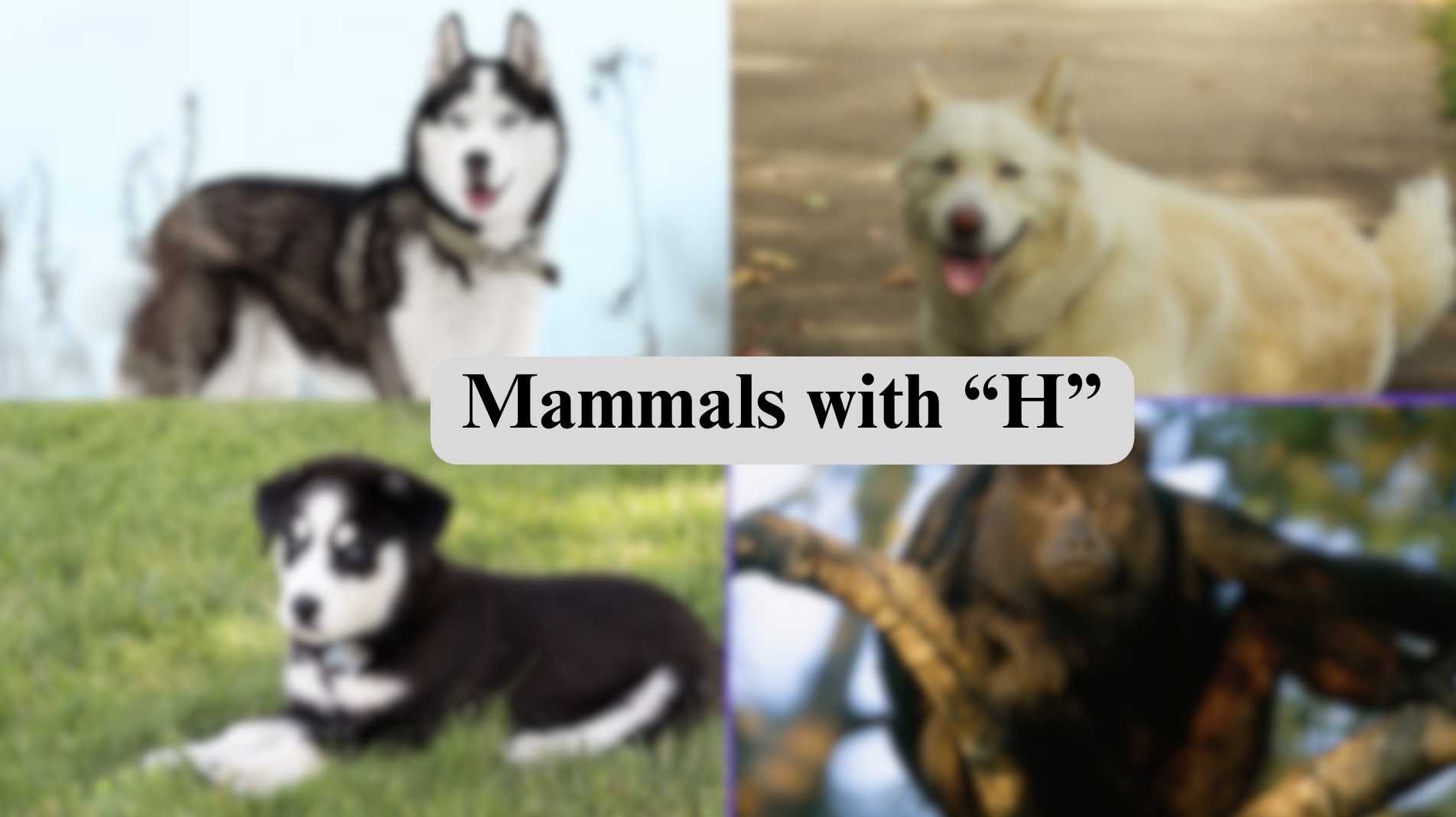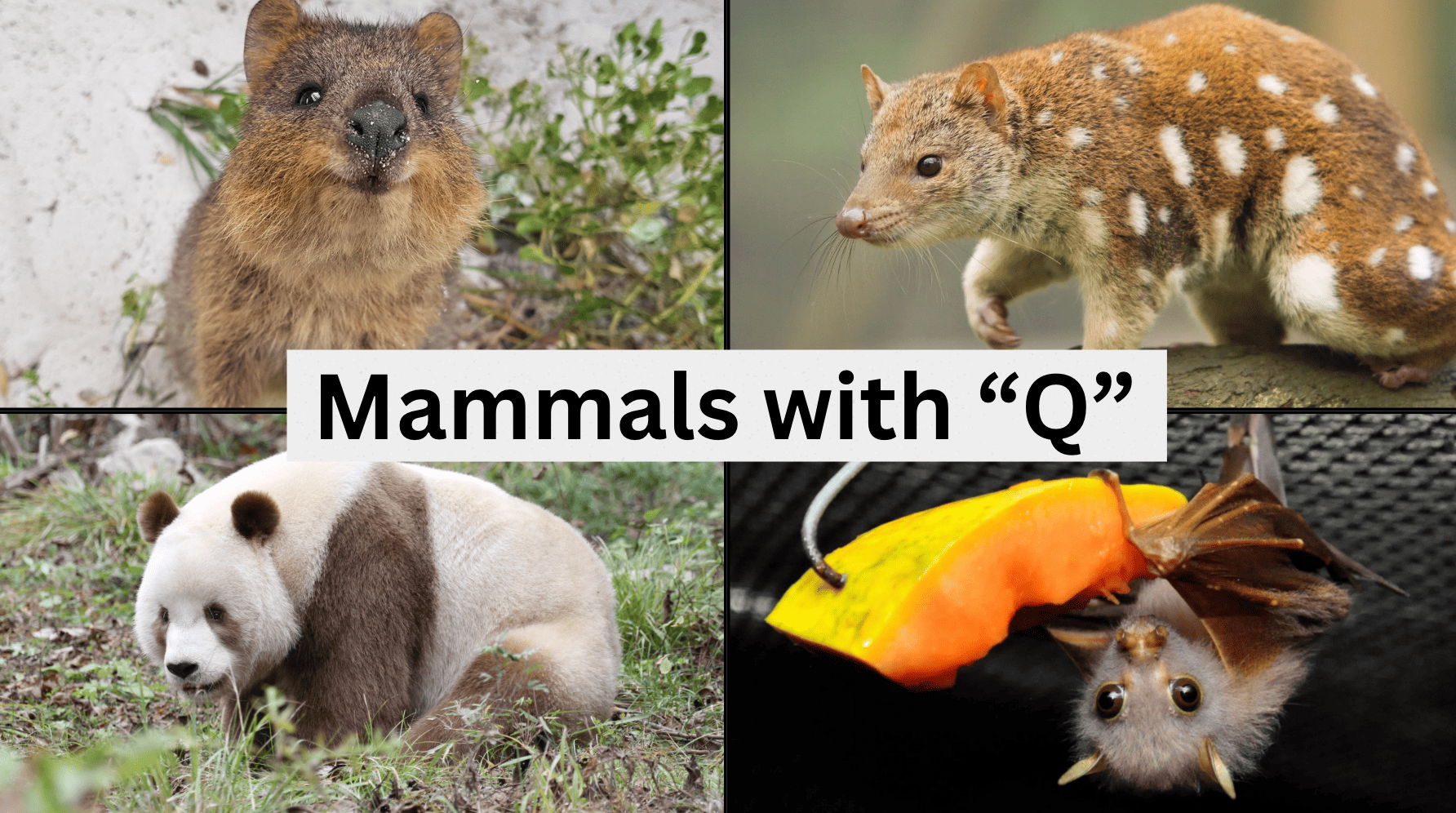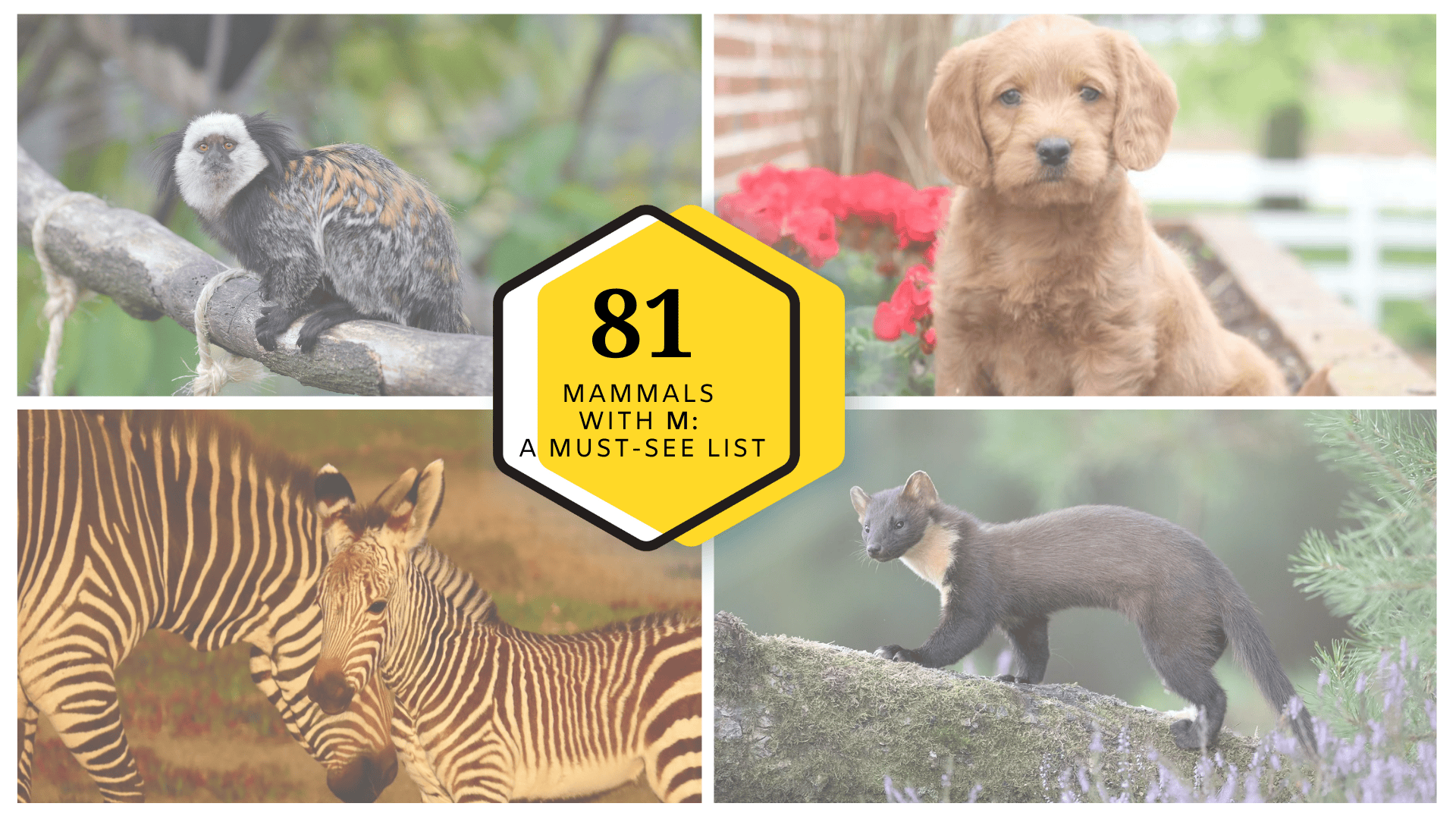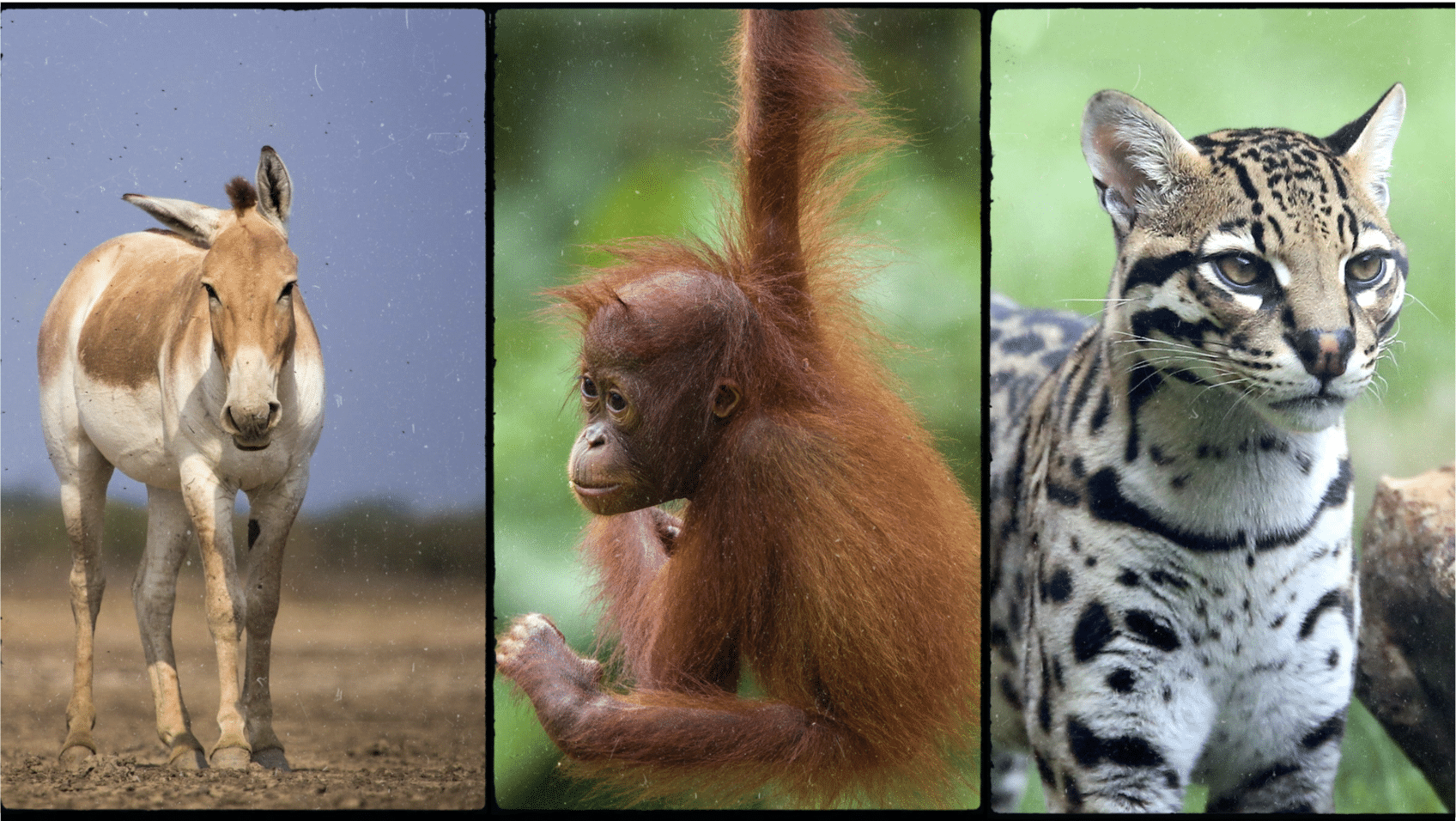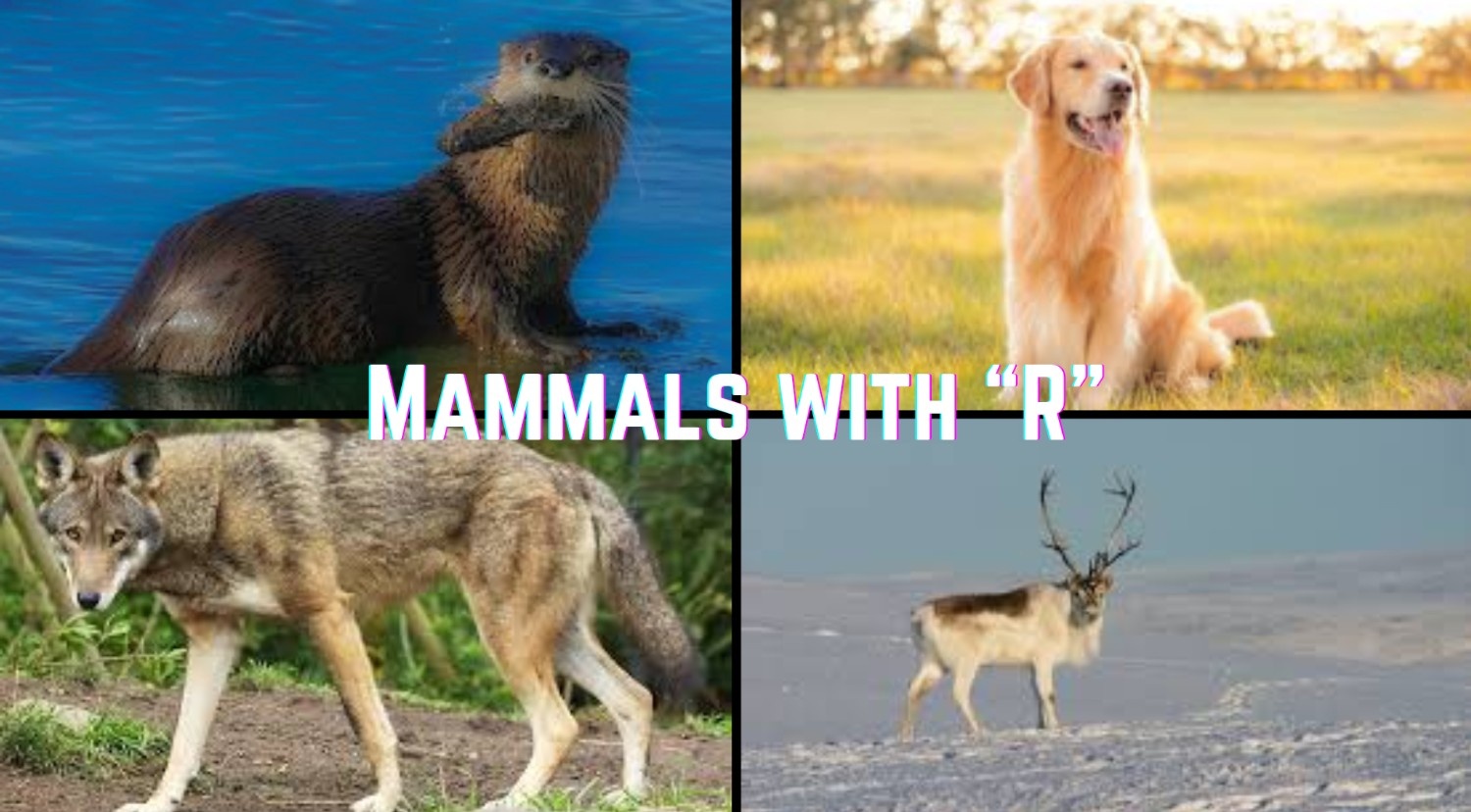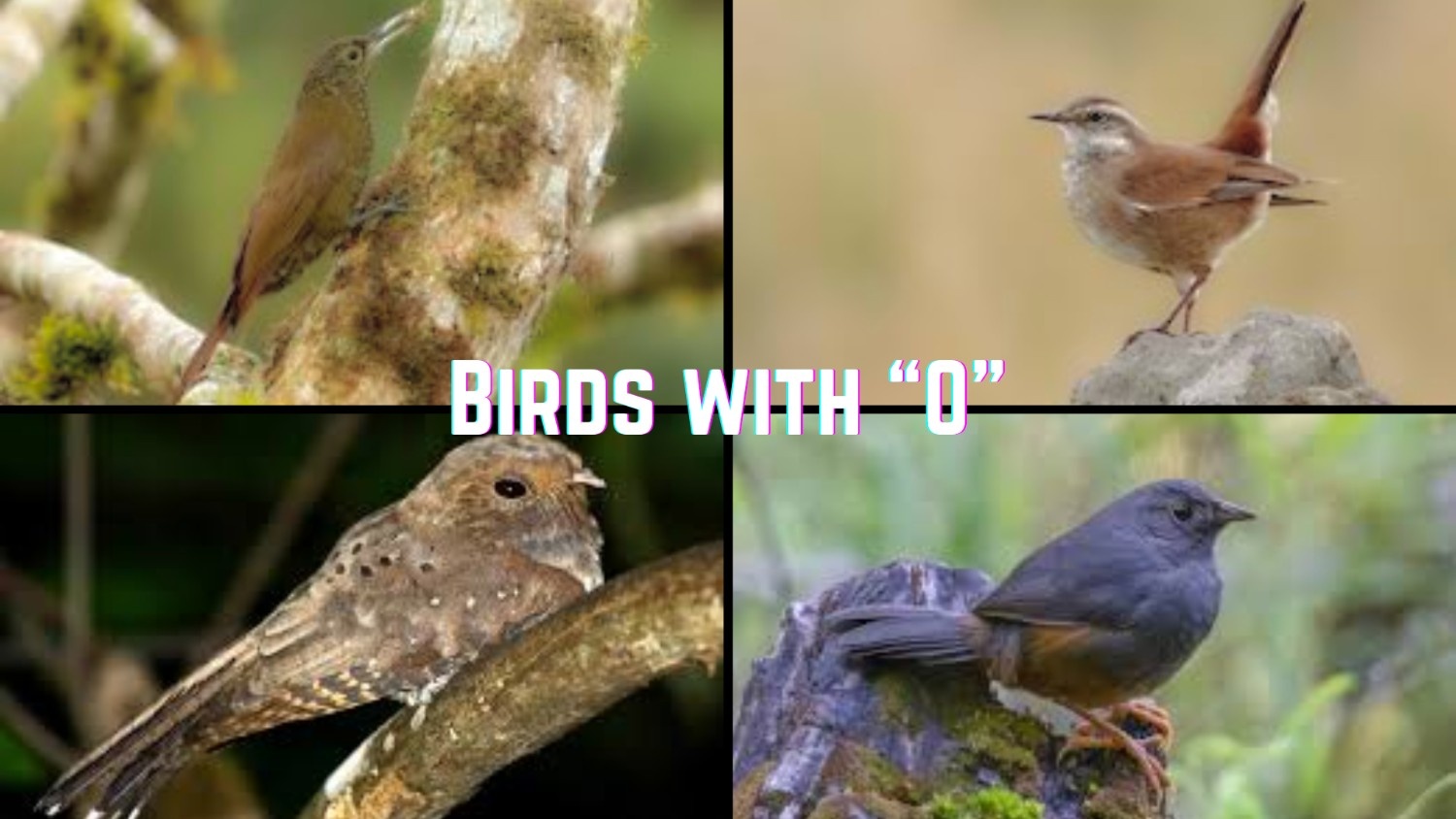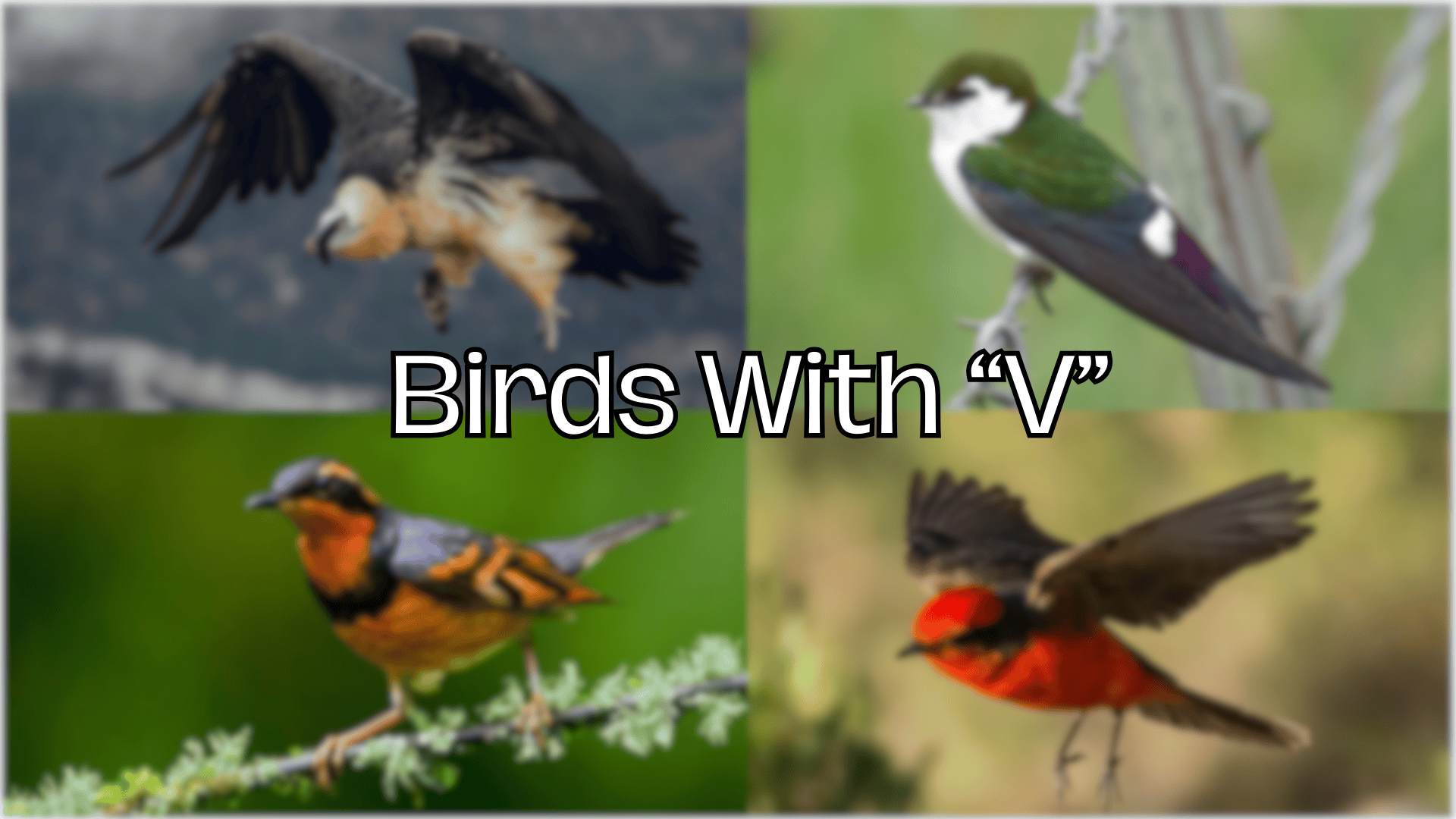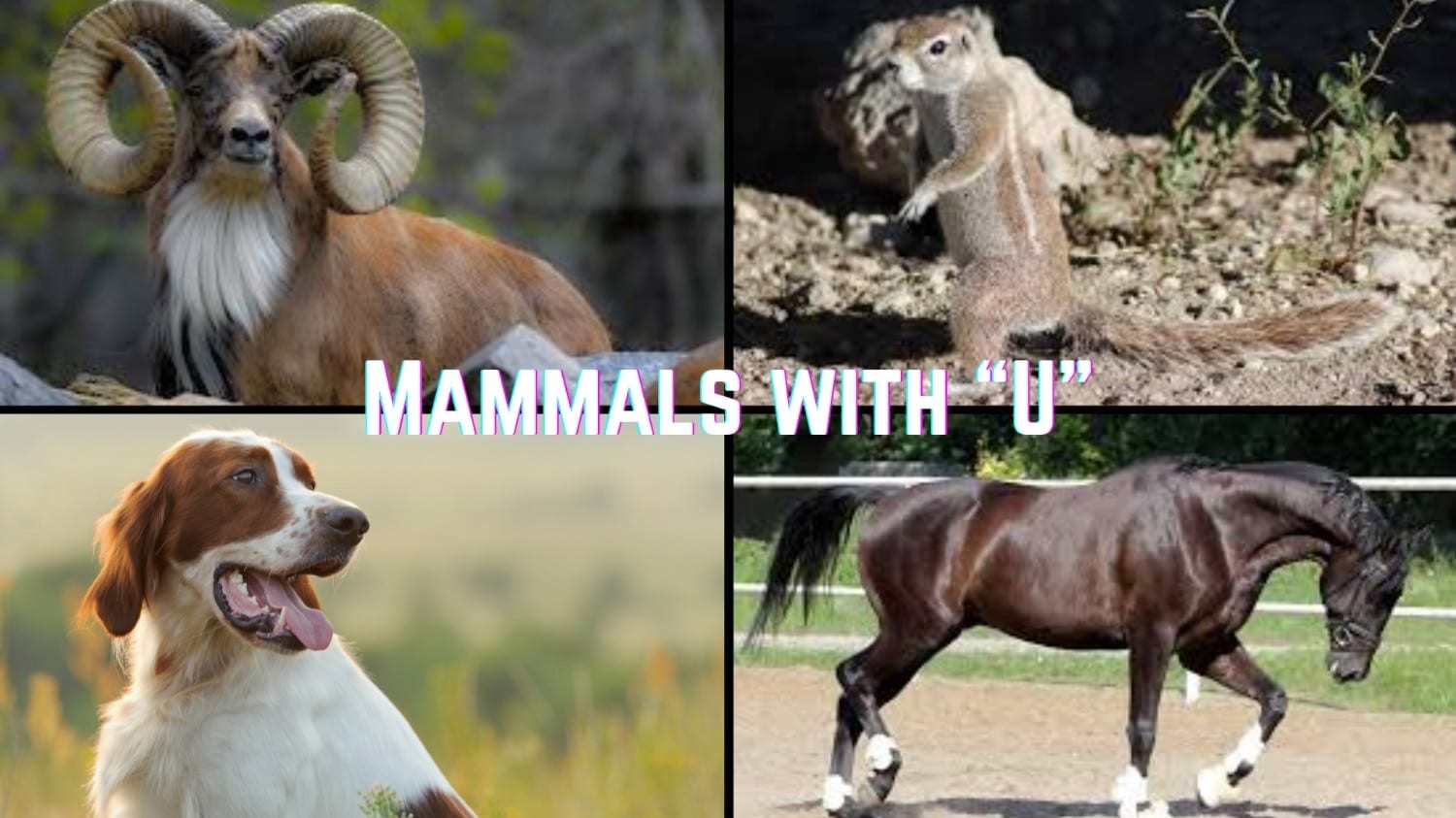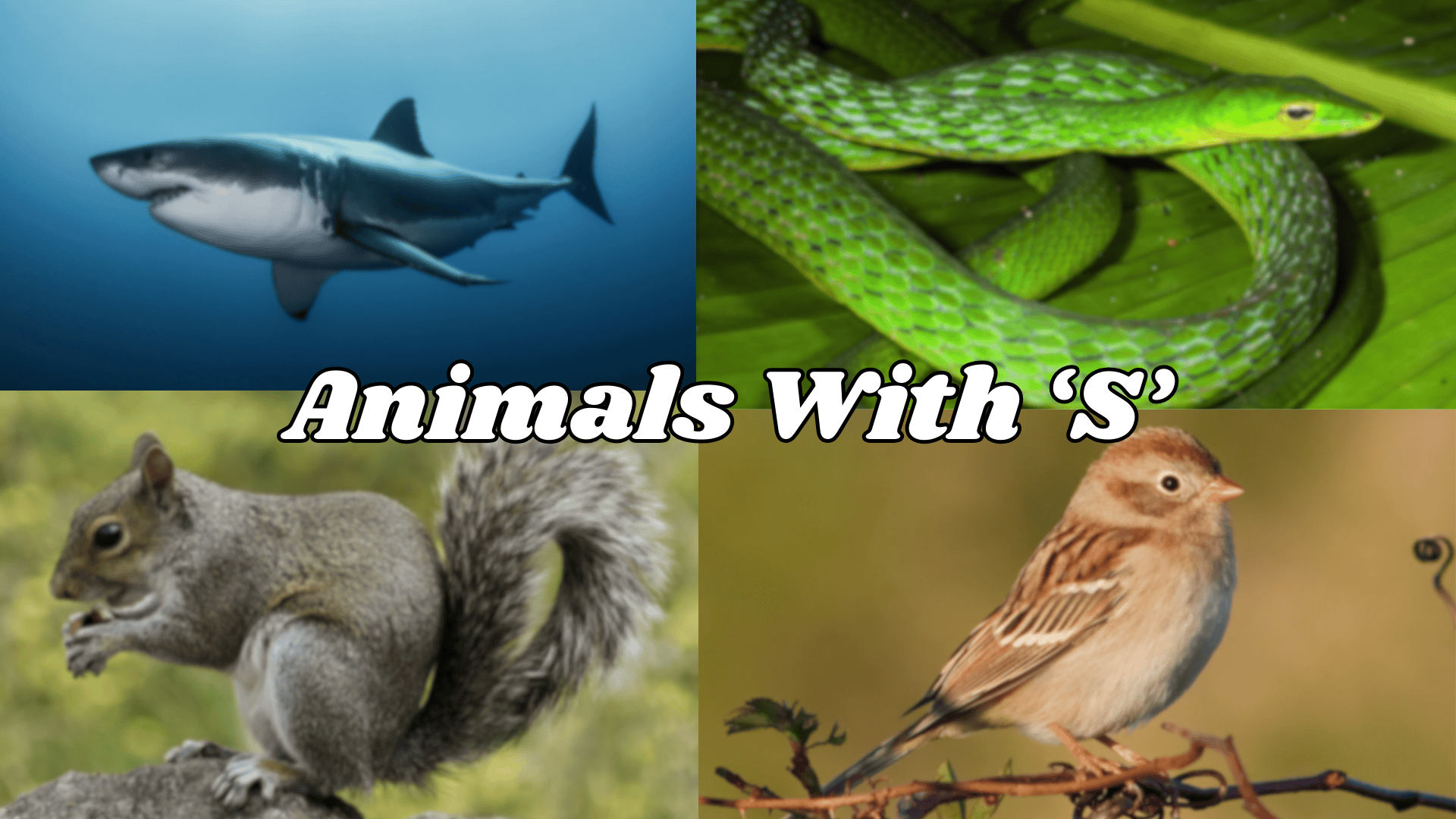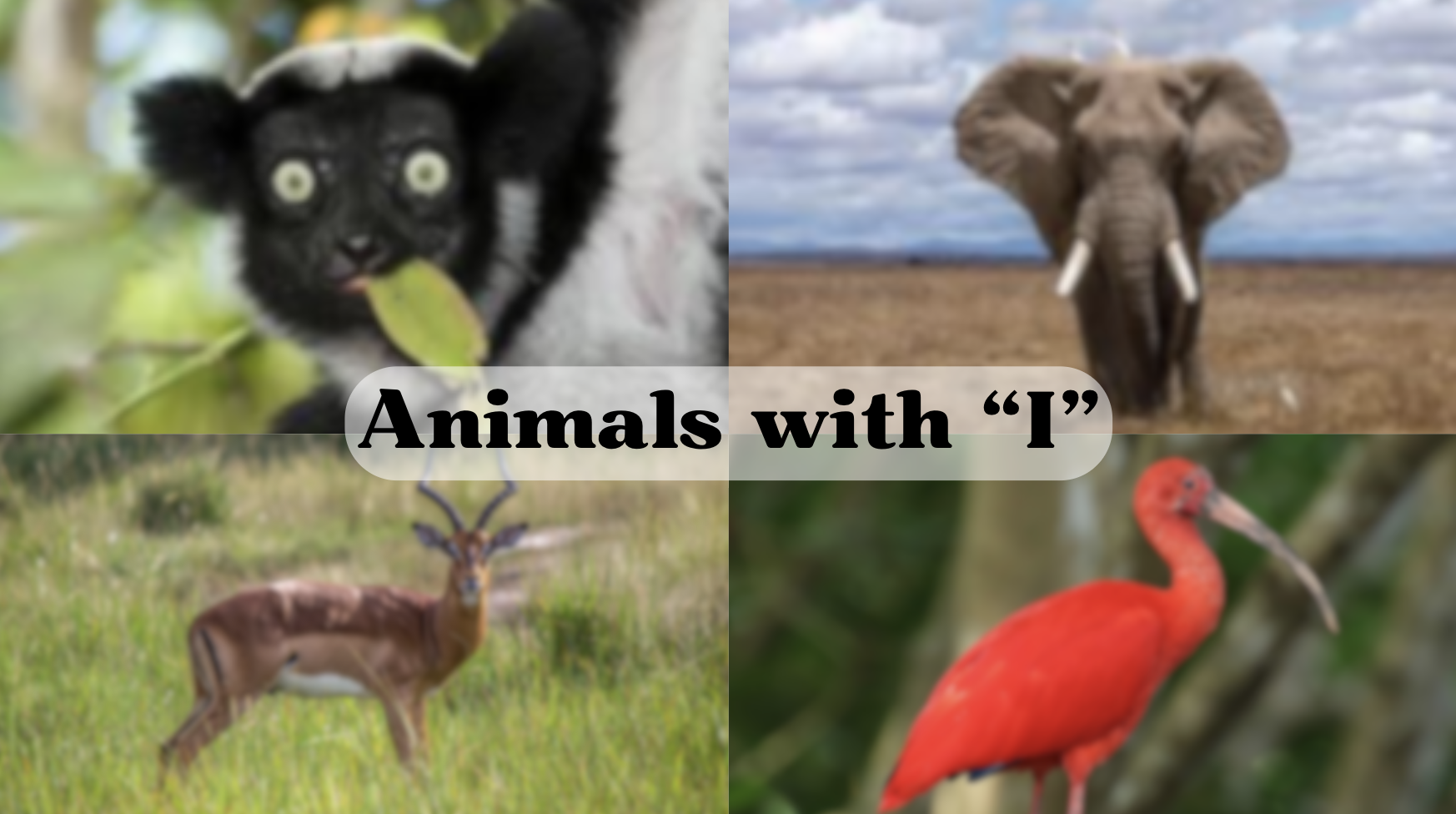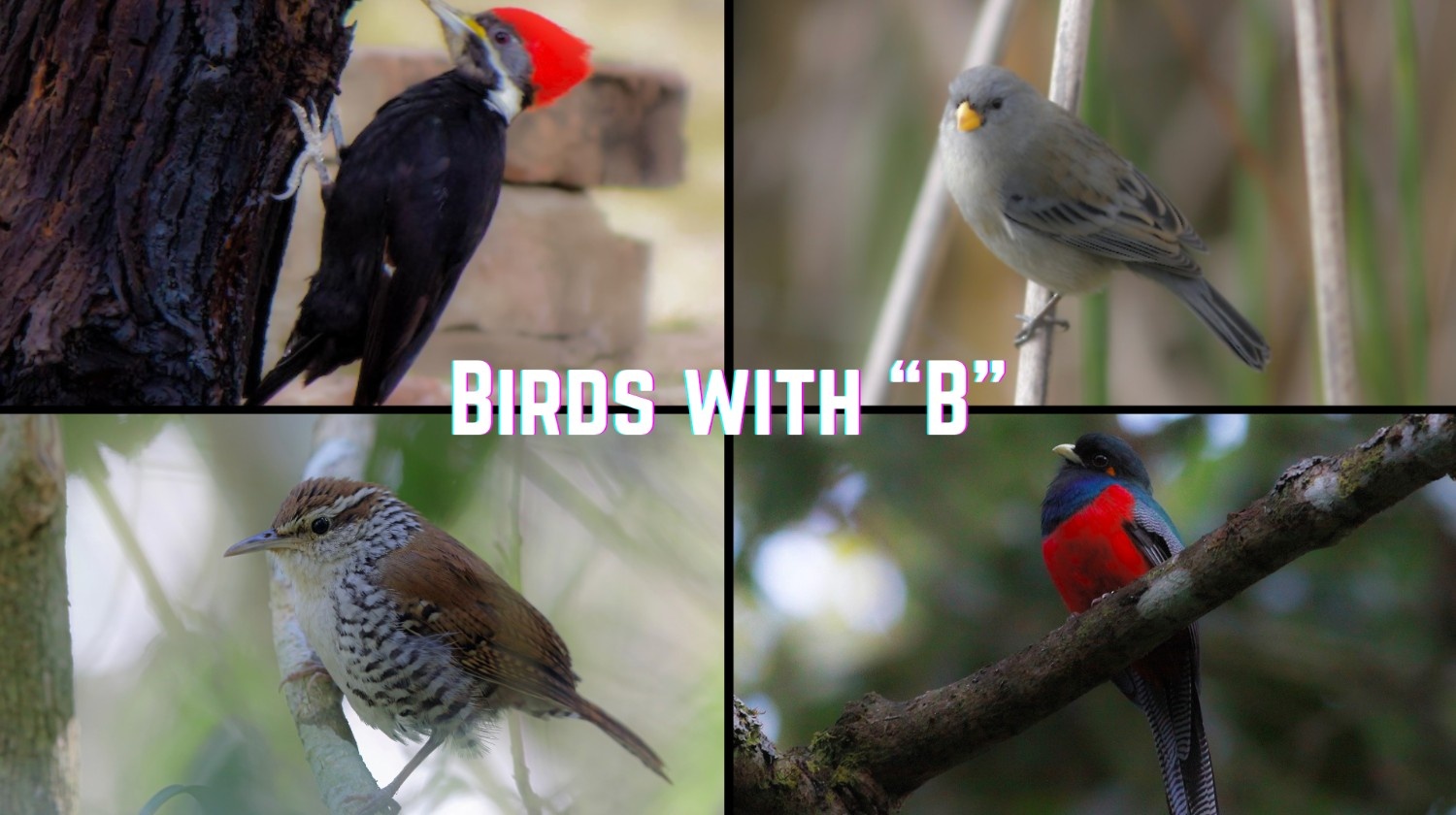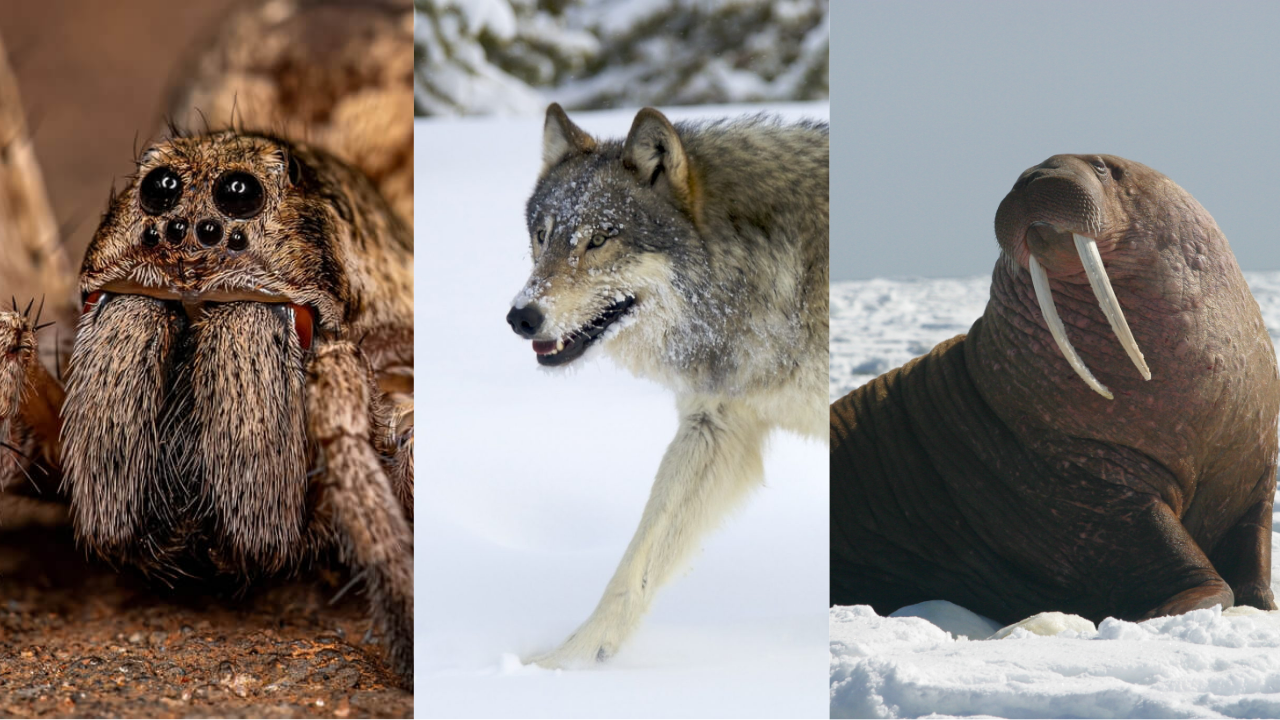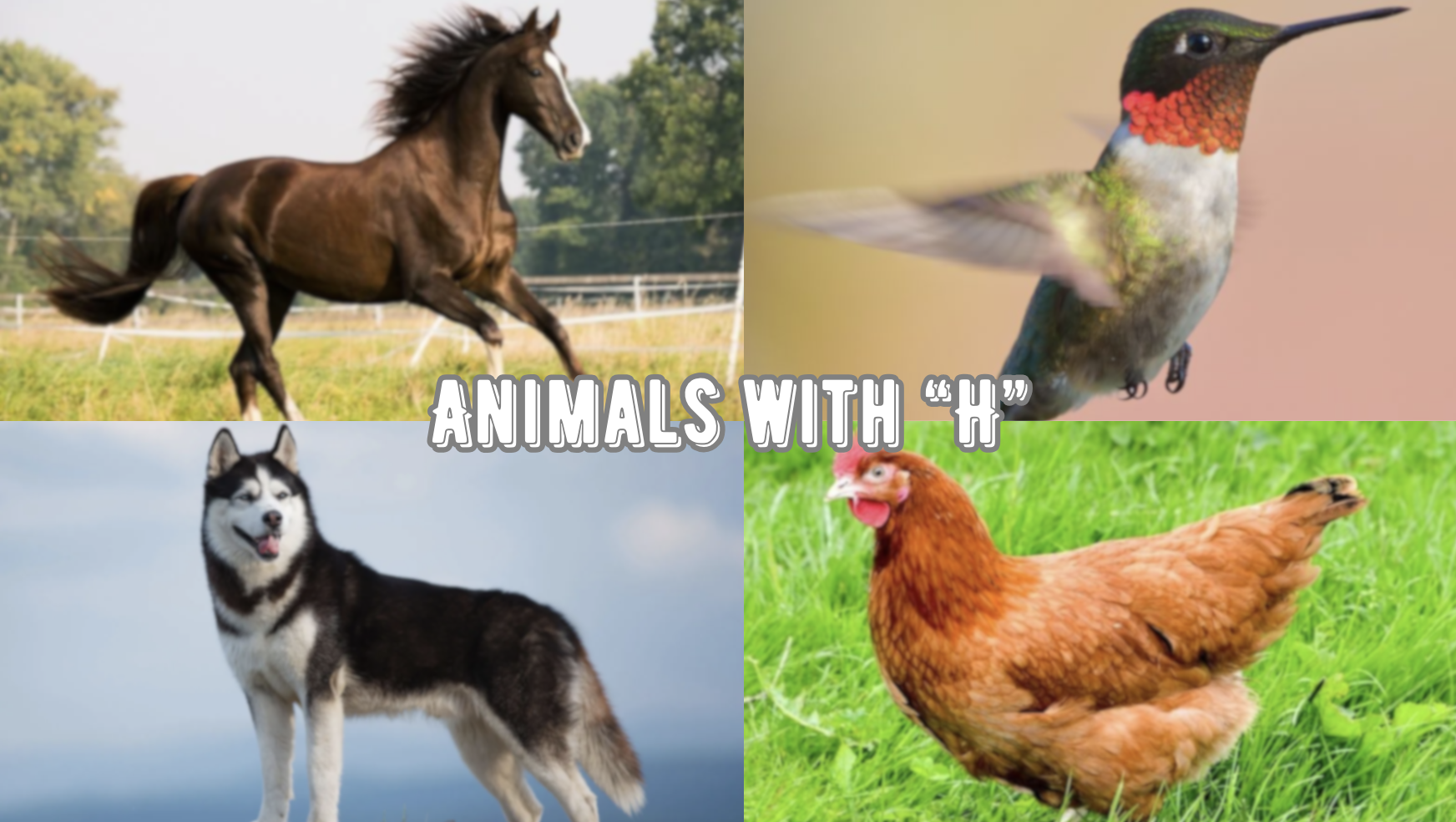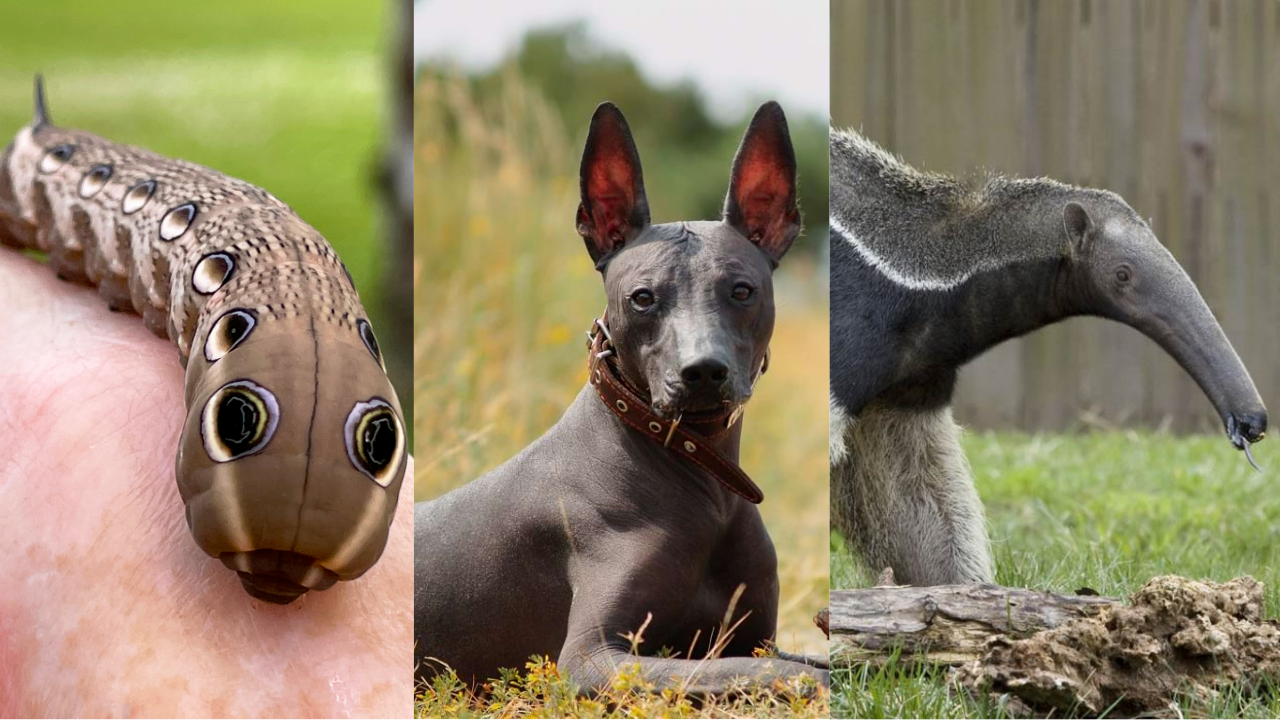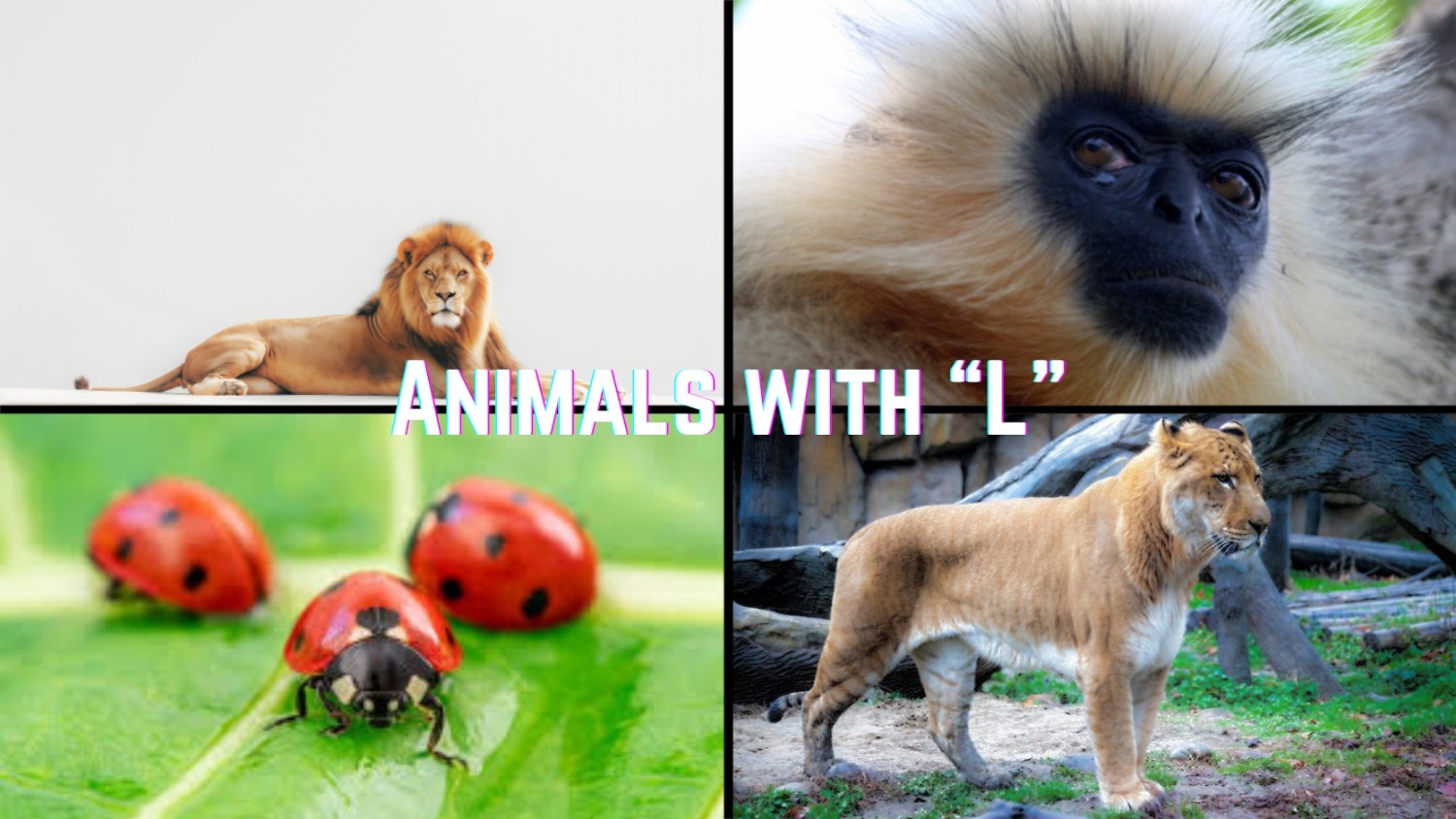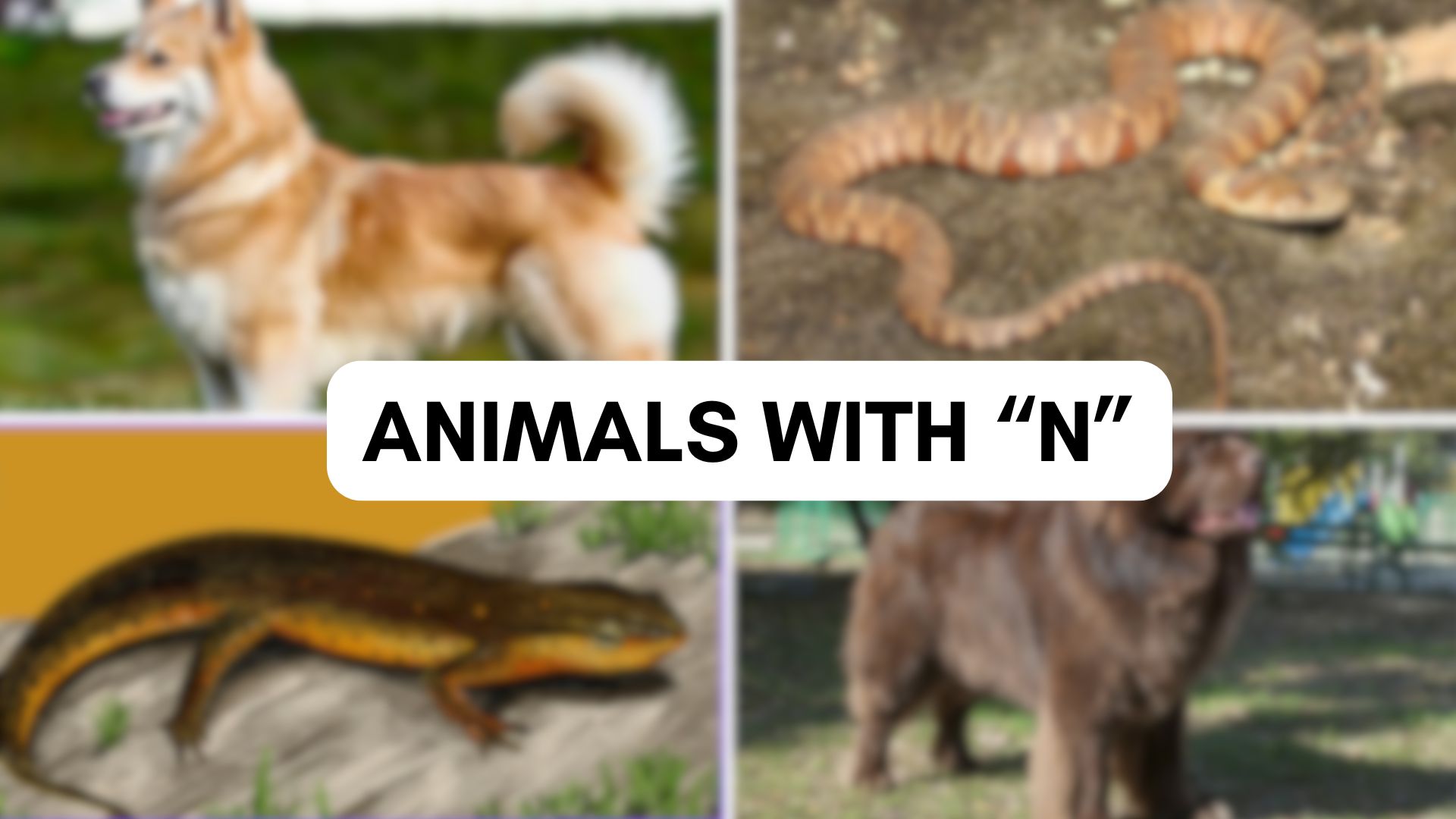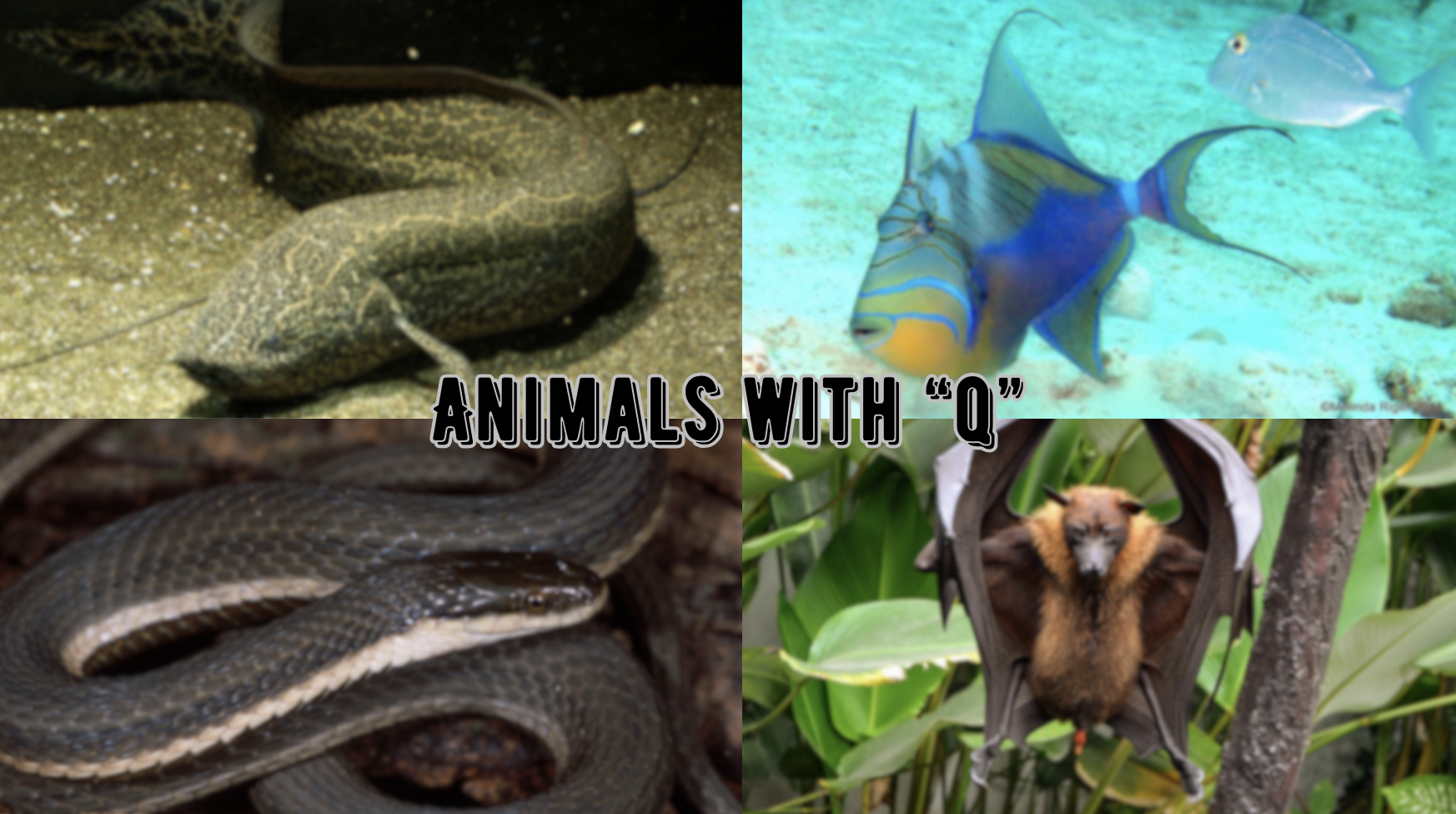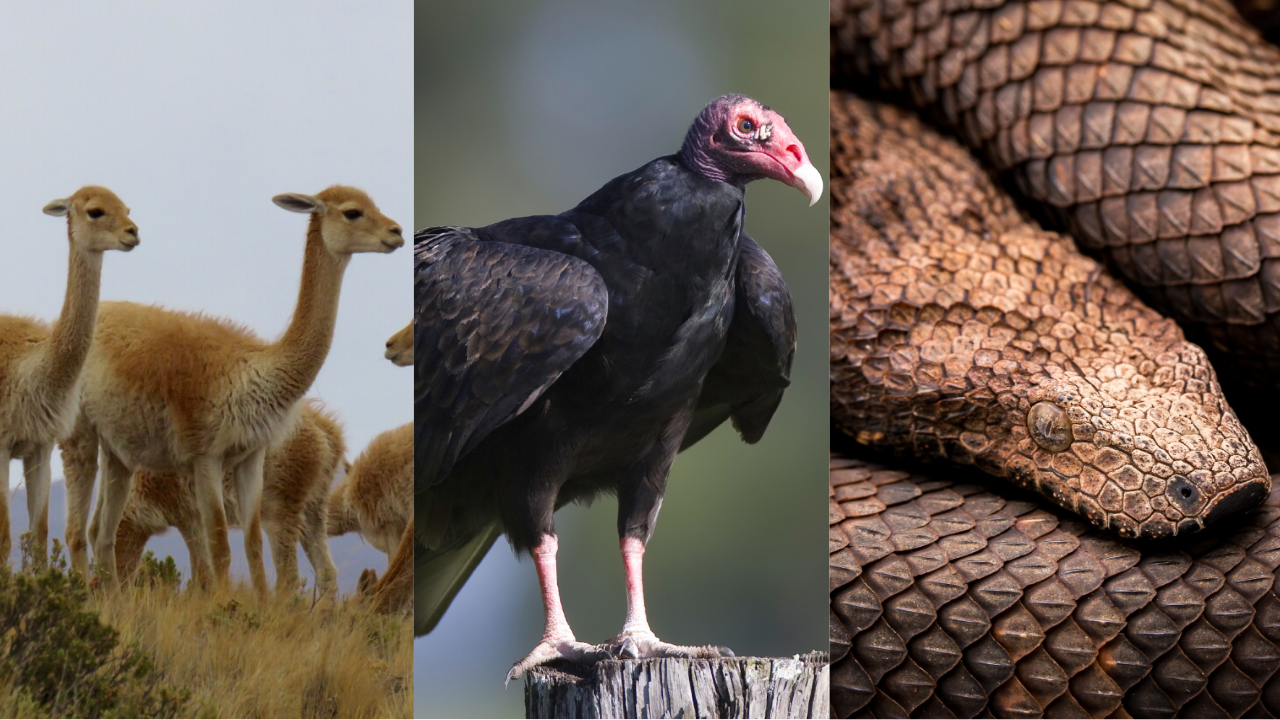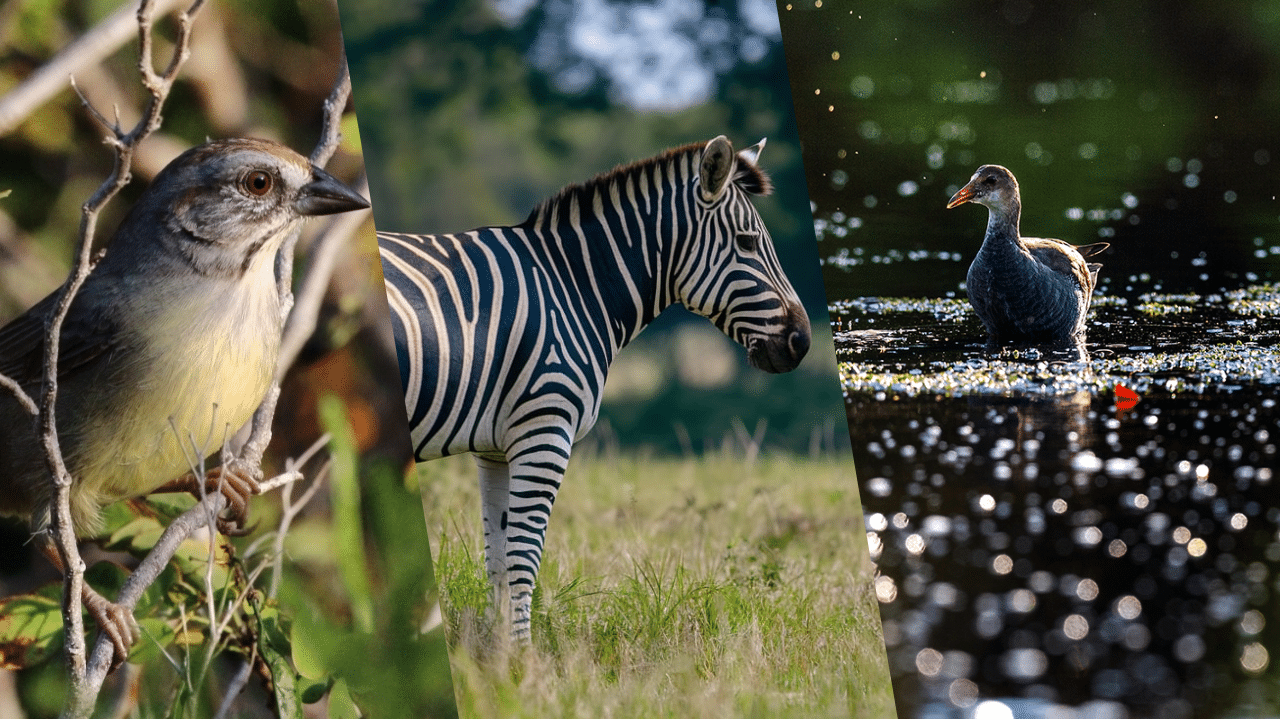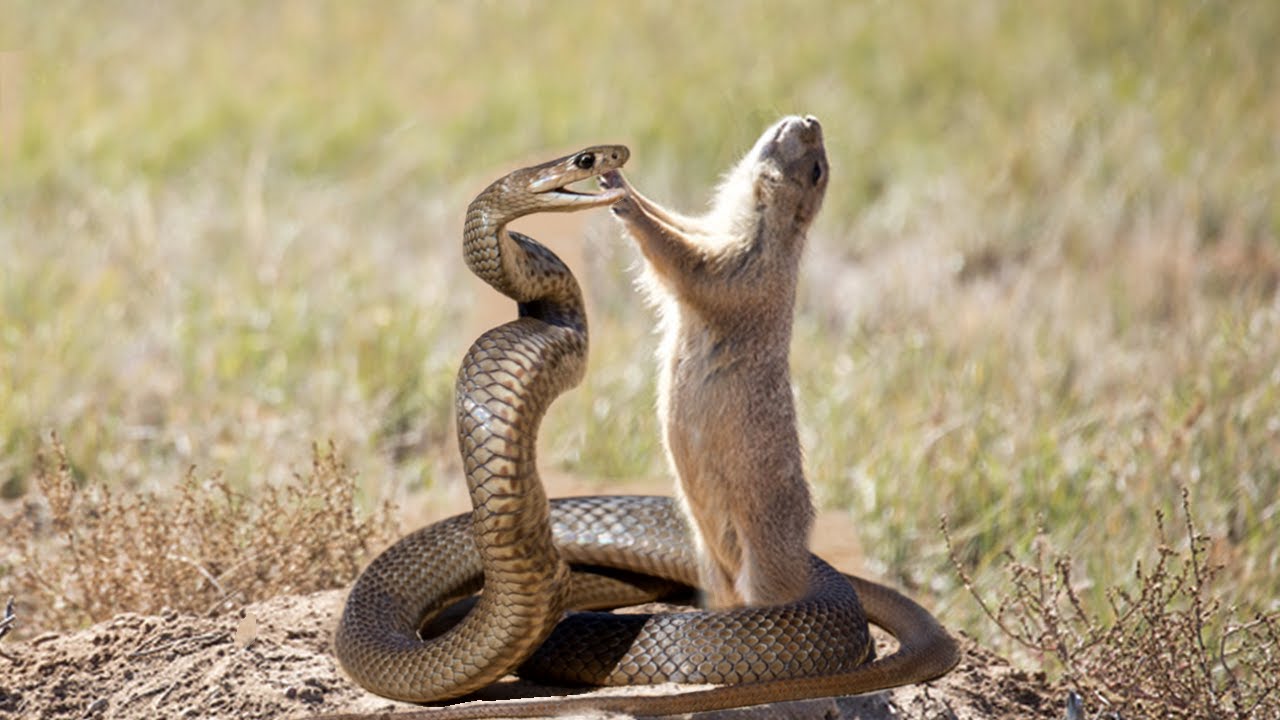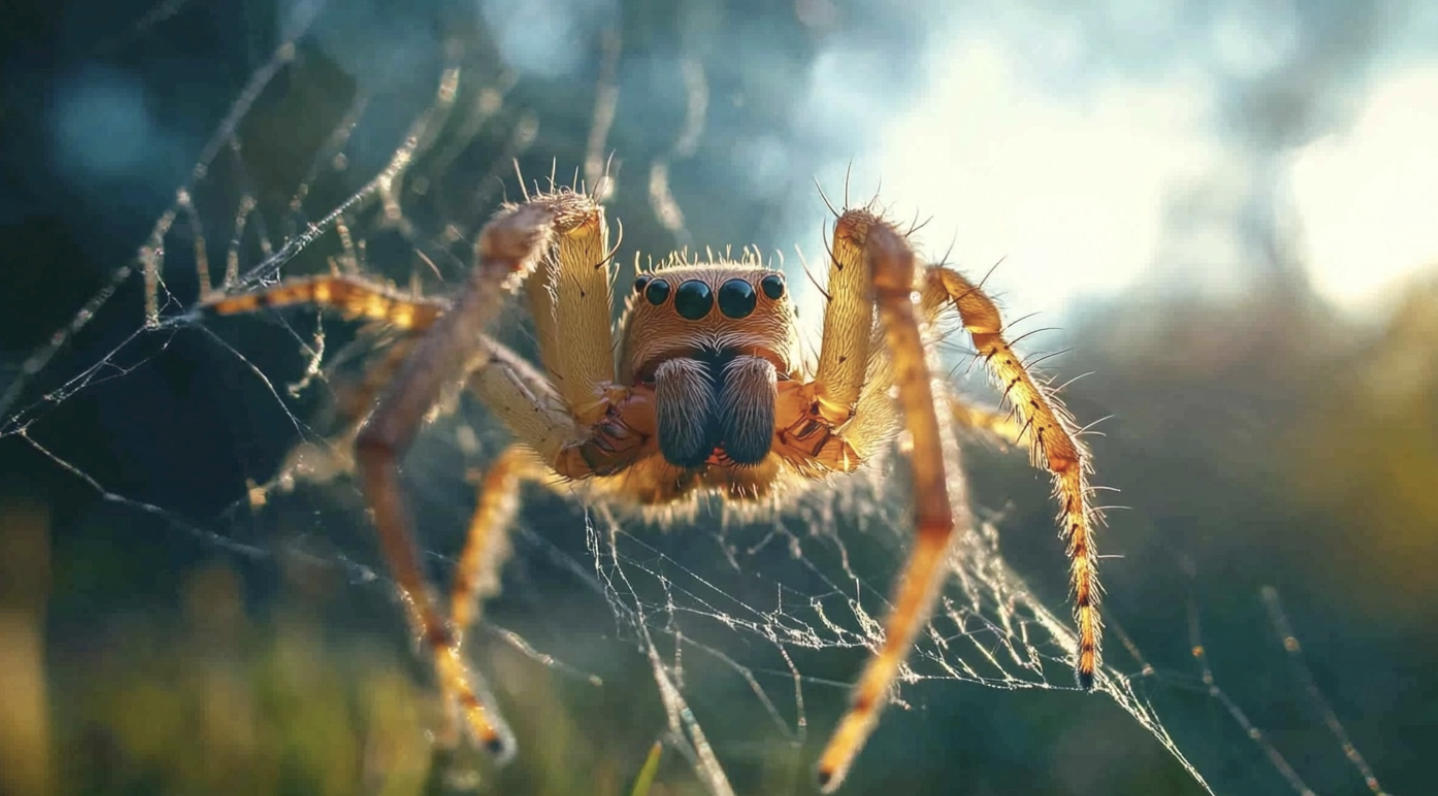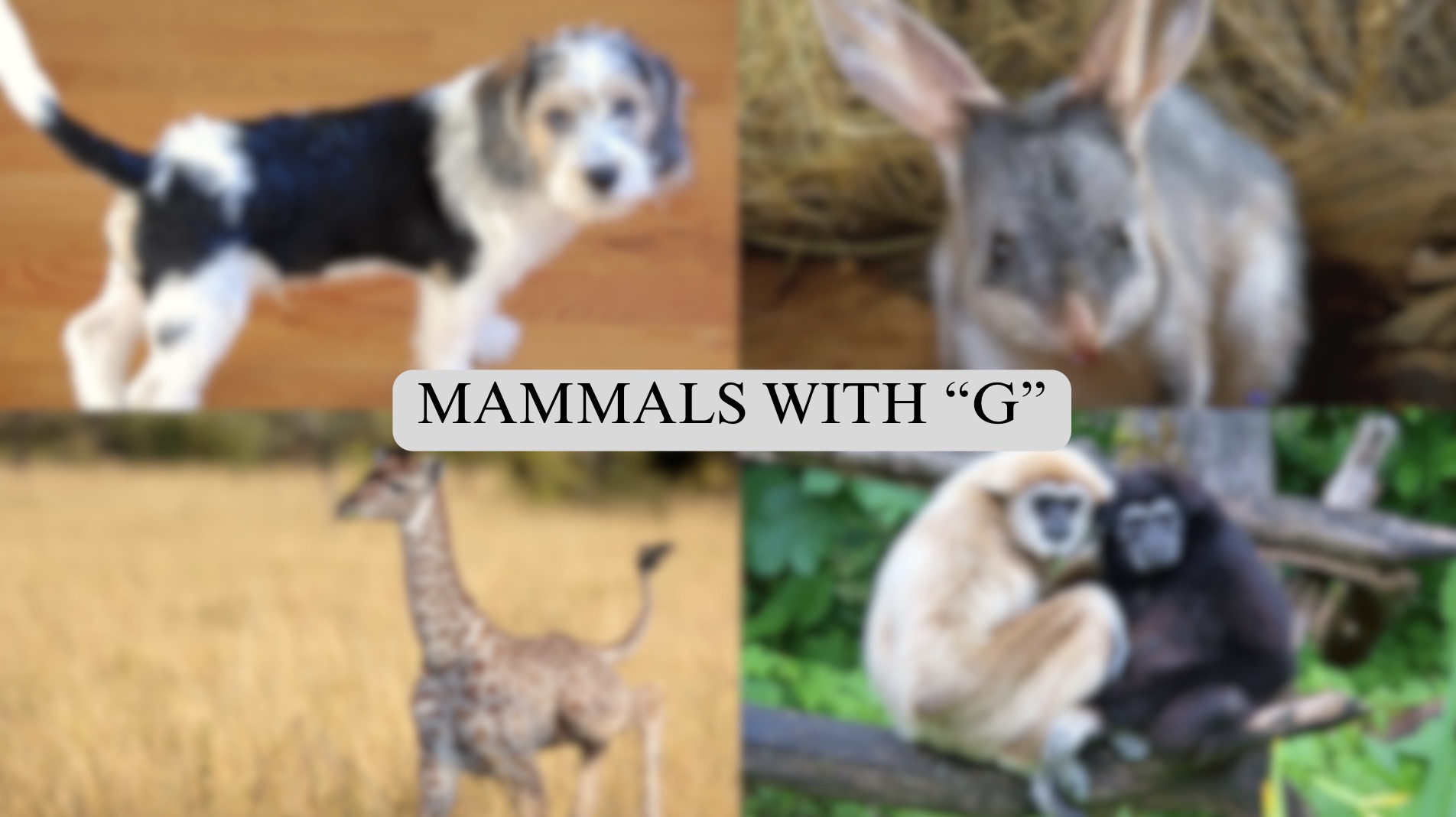
How many amazing animals can you name that start with the letter G? Mammals with G names show incredible variety, from the tall giraffe to the tiny gerbil.
These animals live in places all around the world – from African savannas to household pets in family homes.
German Shepherds serve as loyal working dogs while Giant Pandas munch on bamboo in Chinese forests.
Some, like the Gibbon, swing through trees with amazing skill. Others, like the Greater Bilby, dig deep burrows in Australian deserts.
This guide explores different mammals whose names begin with G, sharing facts about where they live, what they eat, and what makes each one special.
Most Unusual Mammals with “G” Names in the Animal Kingdom
1. Gazelle

Gazelles are graceful, herbivorous mammals found in Africa and Asia. Known for their agility and speed, they can outrun many predators.
They typically live in herds, protected from predators. Gazelles are commonly seen in open plains and grasslands, where they graze on grasses and shrubs.
- Region of Habitat: Africa and Asia, particularly in grasslands and open savannas.
- Scientific Name:Gazella
- Feeding Habits: Herbivorous, feeding primarily on grasses, leaves, and shrubs.
- What Sound They Make: Gazelles make soft bleating sounds and quick snorts when startled or communicating with the herd.
Fun Facts
Gazelles are some of the fastest animals on land, capable of reaching speeds up to 60 mph in short bursts.
They are known for their impressive leaping abilities. They often leap in the air to confuse predators and signal danger to the rest of the herd.
2. Genet
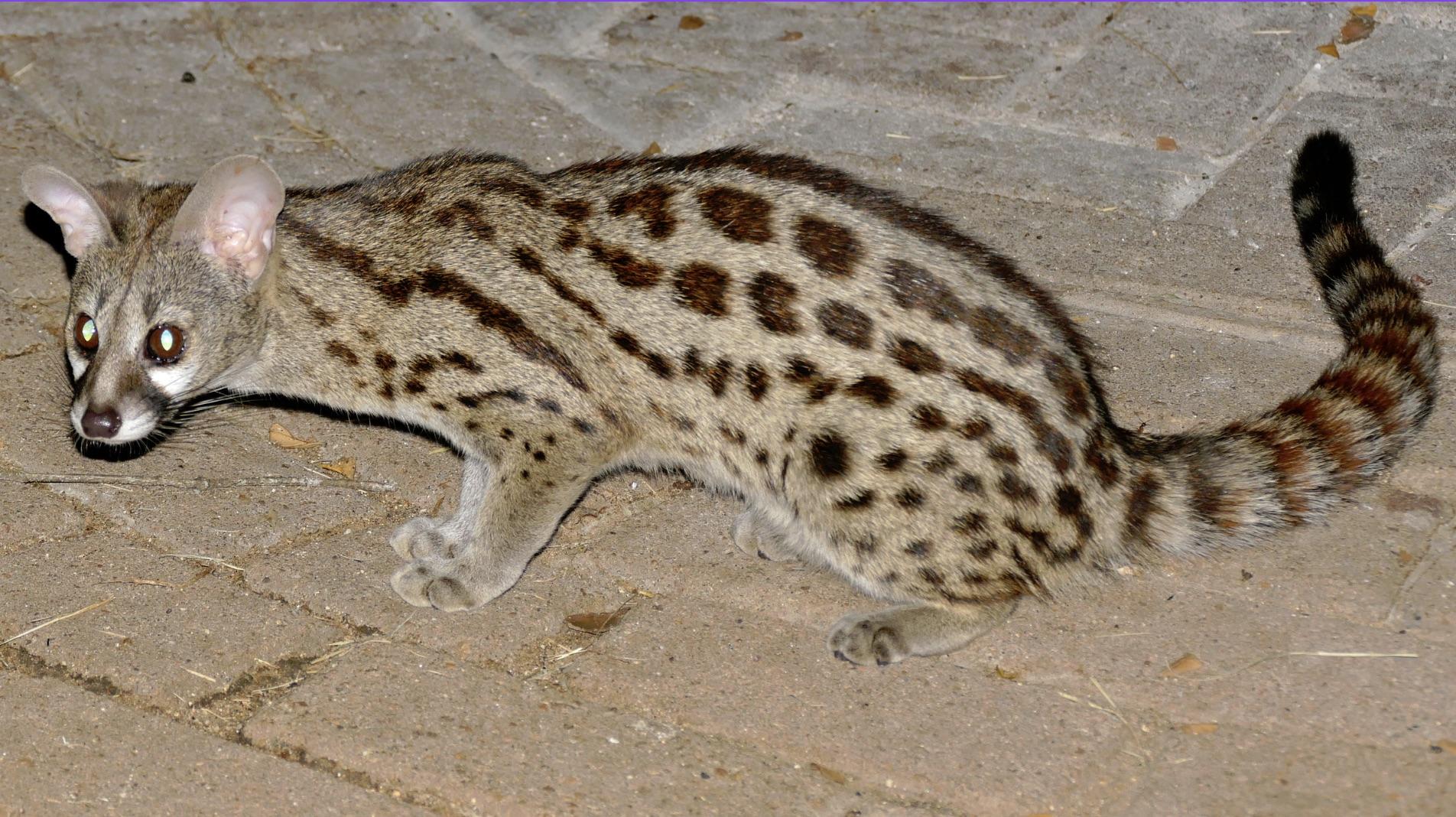
Genets are small, carnivorous mammals from the family Viverridae, closely related to civets. They have long, slender bodies and are known for their agility in climbing and hunting.
Genets are typically nocturnal, feeding on small mammals, birds, and insects in their native habitats.
- Region of Habitat: Sub-Saharan Africa and parts of Europe.
- Scientific Name: Genetta
- Feeding Habits: Carnivorous, preying on small mammals, birds, and insects.
- What Sound They Make: Genets make soft growls, hisses, and occasional high-pitched screams when threatened.
Fun Facts
Despite their cat-like appearance, genets are more closely related to civets and mongeese. They are solitary and highly agile, capable of climbing trees and navigating difficult terrain with ease.
Genets also have a remarkable ability to jump long distances to catch prey or escape predators.
3. Geoffroy’s Tamarin

Geoffroy’s Tamarin is a small primate with distinctive black and white fur and long, bushy tails. Native to Central America, they are social animals that live in family groups.
They are often found in tropical forests, where they feed on fruit, insects, and small vertebrates.
- Region of Habitat: Central America, primarily in tropical forests.
- Scientific Name:Saguinus geoffroyi
- Feeding Habits: Omnivorous, eating fruits, insects, and small animals.
- What Sound They Make: Geoffroy’s Tamarins make high-pitched chattering calls to communicate within their group.
Fun Facts
Geoffroy’s Tamarins are known for their distinctive, playful behavior and close-knit family bonds.
They are agile climbers, spending much of their time in trees. These primates are also incredibly vocal, using a variety of calls to communicate with each other, especially in dense forests.
4. Gerberian Shepsky

The Gerberian Shepsky is a crossbreed between a German Shepherd and a Siberian Husky. Known for their intelligence and energy, they are highly trainable and make excellent working dogs. This breed is often used in search-and-rescue or service work and requires regular exercise to stay happy.
- Region of Habitat: Found globally, often in households as family companions or working dogs.
- Scientific Name:Canis lupus familiaris
- Feeding Habits: Omnivorous, typically eating meat-based dog food along with vegetables.
- What Sound Do They Make: They typically bark loudly and may howl, particularly when excited or when they sense danger.
Fun Facts
Gerberian Shepskys are known for their striking blue eyes, a feature inherited from their Husky parent.
These dogs are highly social and bond closely with their families. Their intelligence and stamina make them well-suited for various jobs, including police work and therapy roles.
5. Gerbil
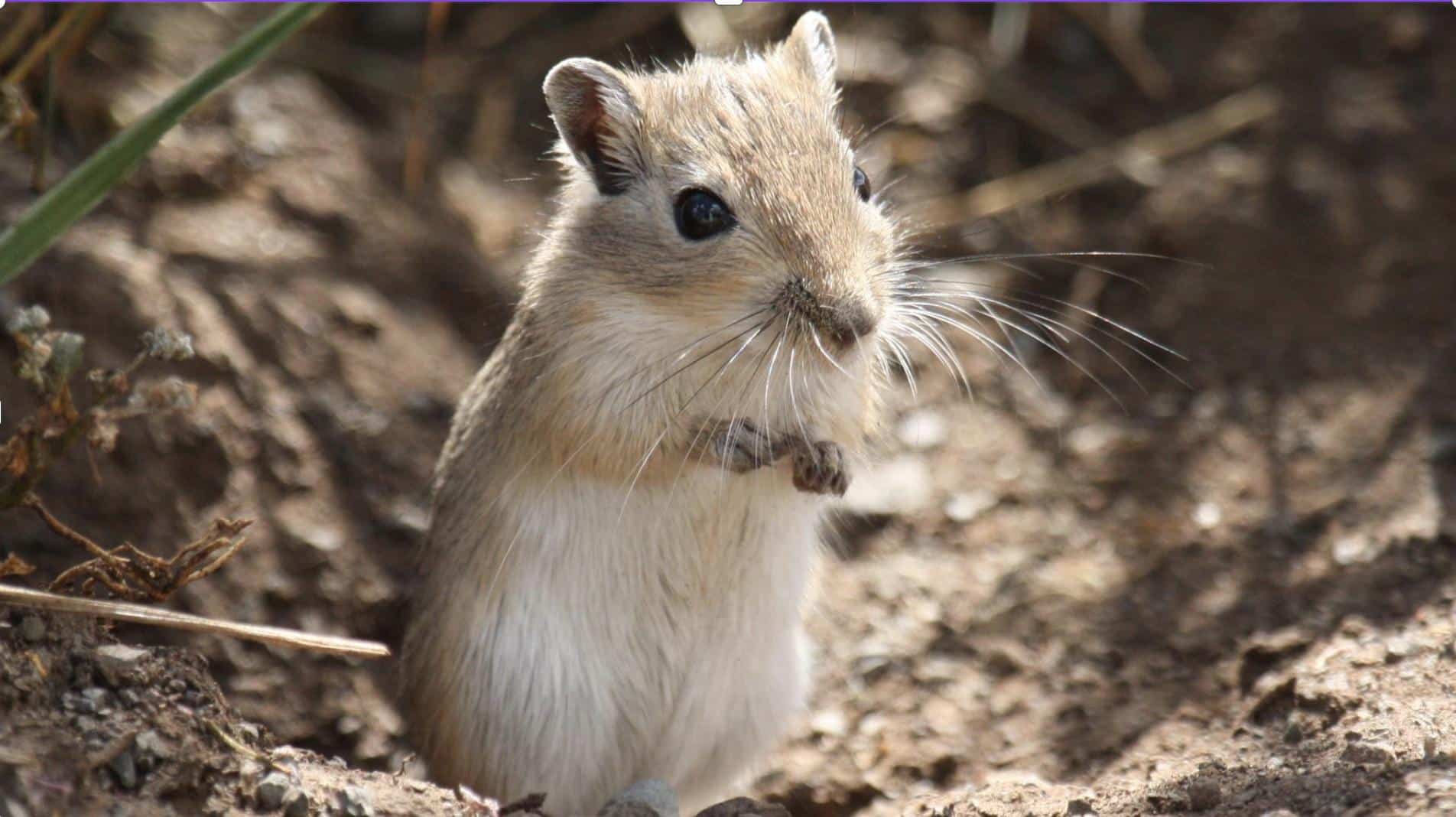
Gerbils are small, burrowing rodents often kept as pets. Native to Asia and Africa, they are social animals that thrive in groups.
Gerbils are active and curious, often engaging in playful behavior. They require a suitable habitat with tunnels and bedding for comfort.
- Region of Habitat: Native to Asia and Africa, commonly found in arid regions.
- Scientific Name:Meriones unguiculatus
- Feeding Habits: Omnivorous, feeding on grains, seeds, and small amounts of vegetables.
- What Sound They Make: Gerbils make high-pitched squeaks or soft chirping sounds, particularly when communicating with others.
- Fun Facts
Gerbils are known for their burrowing habits, creating elaborate tunnel systems in the wild. Their long, strong hind legs allow them to jump when startled.
Gerbils are also highly social. When kept as pets, they enjoy companionship and often sleep together in piles.
6. German Pinscher

The German Pinscher is a medium-sized dog known for its agility, intelligence, and protective nature.
This breed was originally used for hunting and guarding. They are loyal to their families and thrive in active households that provide plenty of mental and physical stimulation.
- Region of Habitat: Originated in Germany, now found as a companion dog worldwide.
- Scientific Name:Canis lupus familiaris
- Feeding Habits: Omnivorous, eating high-quality dog food, meats, and vegetables.
- What Sound They Make: German Pinschers bark loudly and may growl or whine when alerting to potential threats.
Fun Facts
German Pinschers are known for their strong guarding instincts, making them excellent watchdogs.
Despite their bold nature, they are affectionate with their families and enjoy being the center of attention. Their sleek coat requires minimal grooming, making them easy to maintain.
7. German Shepherd

The German Shepherd is a highly versatile and intelligent breed often used in police, military, and service roles.
German Shepherds are known for their loyalty and protective instincts. They are also excellent family dogs, requiring plenty of exercise and mental stimulation to stay content.
- Region of Habitat: Originated in Germany, commonly found worldwide as working or companion dogs.
- Scientific Name:Canis lupus familiaris
- Feeding Habits: Omnivorous, requiring high-protein dog food, meat, and vegetables.
- What Sound They Make: German Shepherds bark loudly and are known to growl or whine when alerting to potential threats.
Fun Facts
German Shepherds are famous for their role as police and military dogs due to their intelligence and loyalty.
Thanks to their strong sense of duty and discipline, they are also skilled in search-and-rescue operations and are commonly used as guide dogs for the blind.
8. German Sheppit

The German Shepherd Pitbull is a hybrid dog breed, combining the German Shepherd and the Pitbull. Known for their protective nature and high energy, they are intelligent and loyal to their families.
This breed thrives on mental and physical challenges, making them excellent working dogs and companions.
- Region of Habitat: Found globally, particularly in homes and as service dogs.
- Scientific Name:Canis lupus familiaris
- Feeding Habits: Omnivorous, requiring a high-protein diet for muscle maintenance and overall health.
- What Sound They Make: German Sheppits have a deep bark, often used for alerting and guarding.
Fun Facts
German Sheppits are often bred for their strength and agility, making them excellent working dogs.
They inherit the loyalty and intelligence of the German Shepherd and pitbull, making them great family pets. However, they require regular training and socialization.
9. German Sheprador
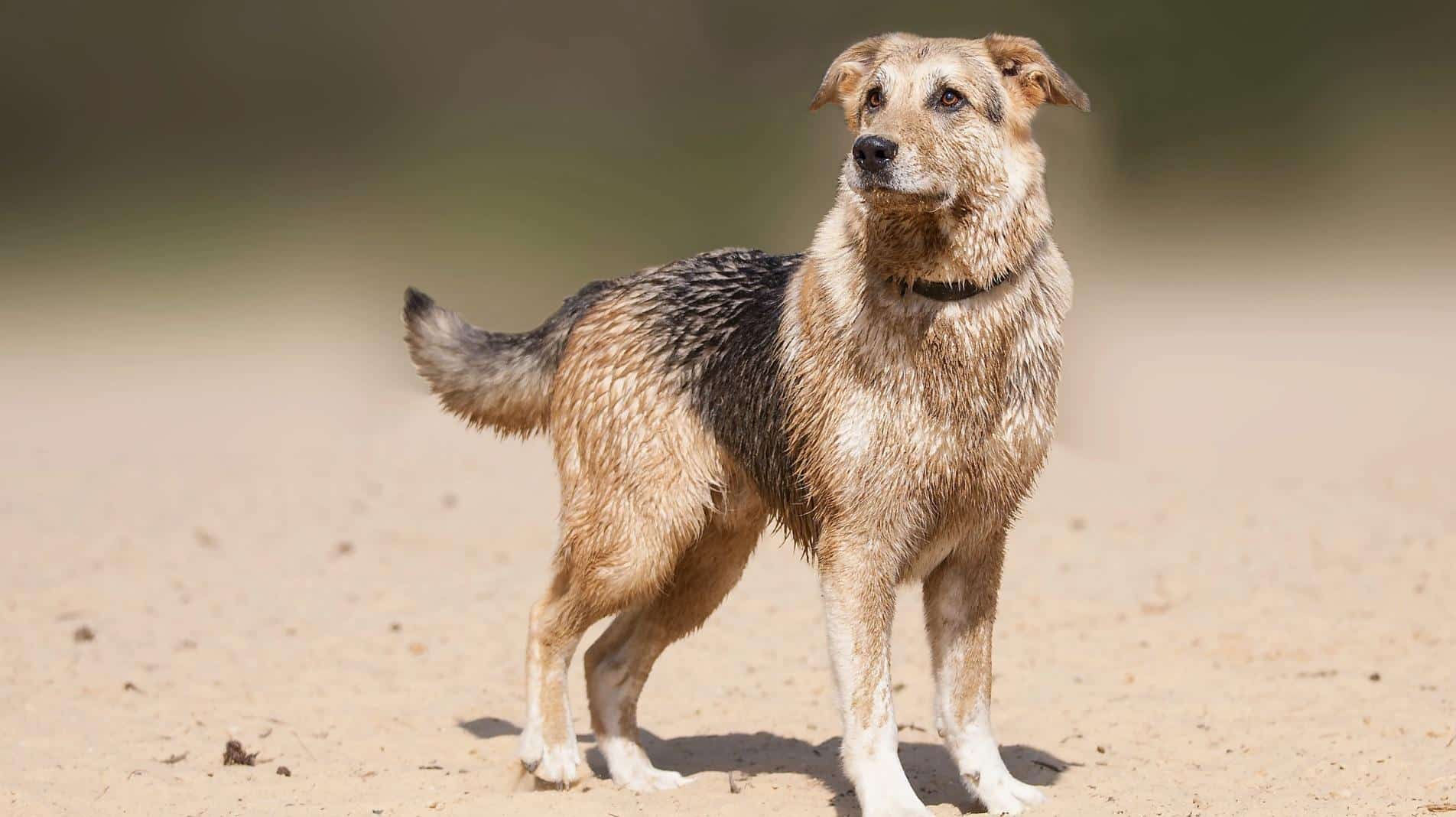
The German Sheprador is a crossbreed between the German Shepherd and the Labrador Retriever.
Known for their intelligence, loyalty, and friendly nature, they make excellent family pets. These dogs are highly trainable and are often used in various working roles, including service and therapy work.
- Region of Habitat: Commonly found as companion dogs in households worldwide.
- Scientific Name:Canis lupus familiaris
- Feeding Habits: Omnivorous, consuming a balanced diet of protein-rich dog food and vegetables.
- What Sound They Make: German Shepradors are known for their deep barks and playful whines, especially when they seek attention.
Fun Facts
German Shepradors combine the energy of Labradors with the intelligence of German Shepherds.
They are well-suited for families and active individuals, excelling in various activities like agility training, obedience, and search-and-rescue operations.
10. German Shorthaired
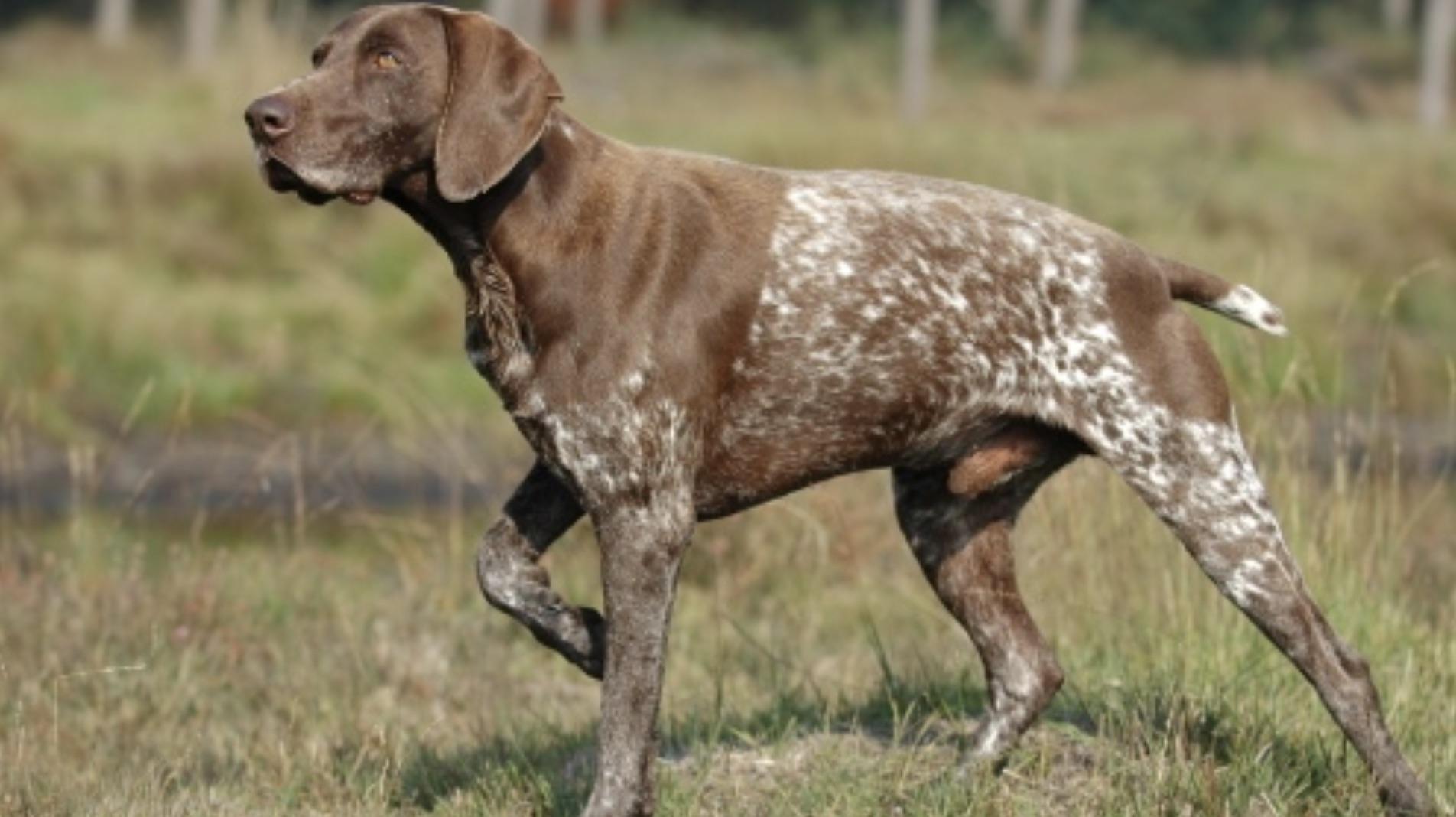
The German Shorthaired is a versatile hunting dog, prized for its speed and endurance.
Known for their keen nose and ability to track game, they are highly intelligent and affectionate, making them great companions for active families. This breed requires plenty of exercise to thrive.
- Region of Habitat: Originated in Germany, now found worldwide as a hunting companion and family dog.
- Scientific Name:Canis lupus familiaris
- Feeding Habits: Omnivorous, requiring a high-protein diet and healthy fats for energy.
- What Sound They Make: German Shorthaired Pointers bark to alert and are also known for their energetic and excited whines.
Fun Facts
German Shorthaired Pointers are known for their high energy and stamina, excelling in field trials and sporting events.
Despite their strong hunting instincts, they are affectionate and loyal to their families, making them excellent companions for active households.
11. German Spitz

The German Spitz is a small to medium-sized dog with a fluffy coat and a fox-like face. Known for their energetic nature and intelligence, they are often used as companion animals.
They are friendly, alert, and loyal, making them great pets for active families.
- Region of Habitat: Originated in Germany, now found in households globally as a companion animal.
- Scientific Name:Canis lupus familiaris
- Feeding Habits: Omnivorous, typically eating a well-balanced diet of high-protein dog food.
- What Sound They Make: German Spitz dogs are known for their sharp barks, especially when alert or excited.
Fun Facts
German Spitz dogs are highly social and love being around people. Their thick, double coat requires regular grooming to keep it looking neat.
They are also known for their playful nature and can be quite energetic, often enjoying outdoor activities like walks and fetch.
12. Giant Armadillo

The Giant Armadillo is a large species of armadillo found in the grasslands and forests of South America.
With its distinctive armored shell, it uses its strong claws to dig for food, primarily ants and termites. These solitary creatures are highly nocturnal.
- Region of Habitat: South America, particularly in Brazil, Paraguay, and Argentina.
- Scientific Name:Priodontes maximus
- Feeding Habits: Carnivorous, primarily feeding on ants, termites, and other invertebrates.
- What Sound They Make: Giant armadillos make hissing or grunting sounds when threatened or startled.
Fun Facts
Giant Armadillos are the largest of the armadillo species, reaching lengths of up to 1.2 meters.
Despite their heavy armor, they are very agile and can dig rapidly with their strong claws. Due to their elusive nature, they are also one of the least studied mammals.
13. Giant Golden Mole

Known for its golden fur and impressive digging abilities, it is primarily nocturnal and feeds on insects and small invertebrates. It has adapted to a life underground with specialized features.
- Region of Habitat: Southern Africa, particularly in grasslands and savanna regions.
- Scientific Name:Chrysospalax trevelyani
- Feeding Habits: Carnivorous, feeding primarily on insects and small invertebrates.
- What Sound They Make: Giant Golden Moles are silent but may make soft rustling or scratching noises while moving through the earth.
Fun Facts
Despite their name, Giant Golden Moles are not actually moles but are closely related to shrews.
Their unique golden fur helps them blend into the sandy soil they live in. They are excellent diggers, using their powerful limbs to excavate tunnels efficiently.
14. Giant Panda Bear
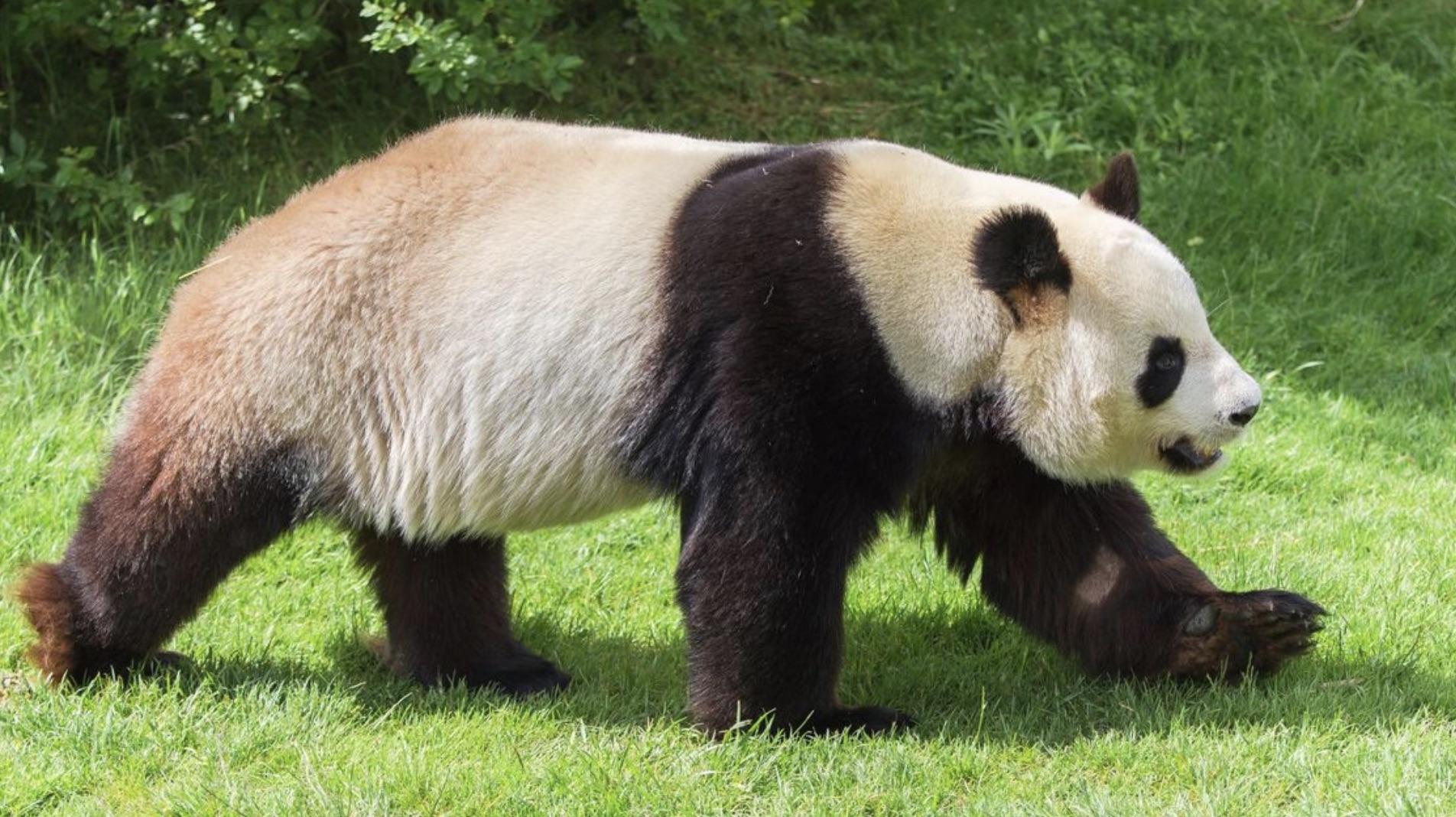
The Giant Panda is a bear species native to China, known for its striking black and white fur. It primarily feeds on bamboo, which makes up 99% of its diet.
Pandas are solitary animals and spend most of their time foraging and resting.
- Region of Habitat: Central China, mainly in mountain ranges where bamboo forests grow.
- Scientific Name:Ailuropoda melanoleuca
- Feeding Habits: Herbivorous, primarily feeding on bamboo, with occasional consumption of other plants and small animals.
- What Sound They Make: Giant pandas make low grunts and bleats, often to communicate with one another.
Fun Facts
Due to their endangered status, Giant Pandas are considered a symbol of conservation. Despite being classified as carnivores, pandas have adapted to a mostly herbivorous diet and require large amounts of bamboo daily to meet their nutritional needs. They are also known for their playful nature.
15. Giant Schnauzer
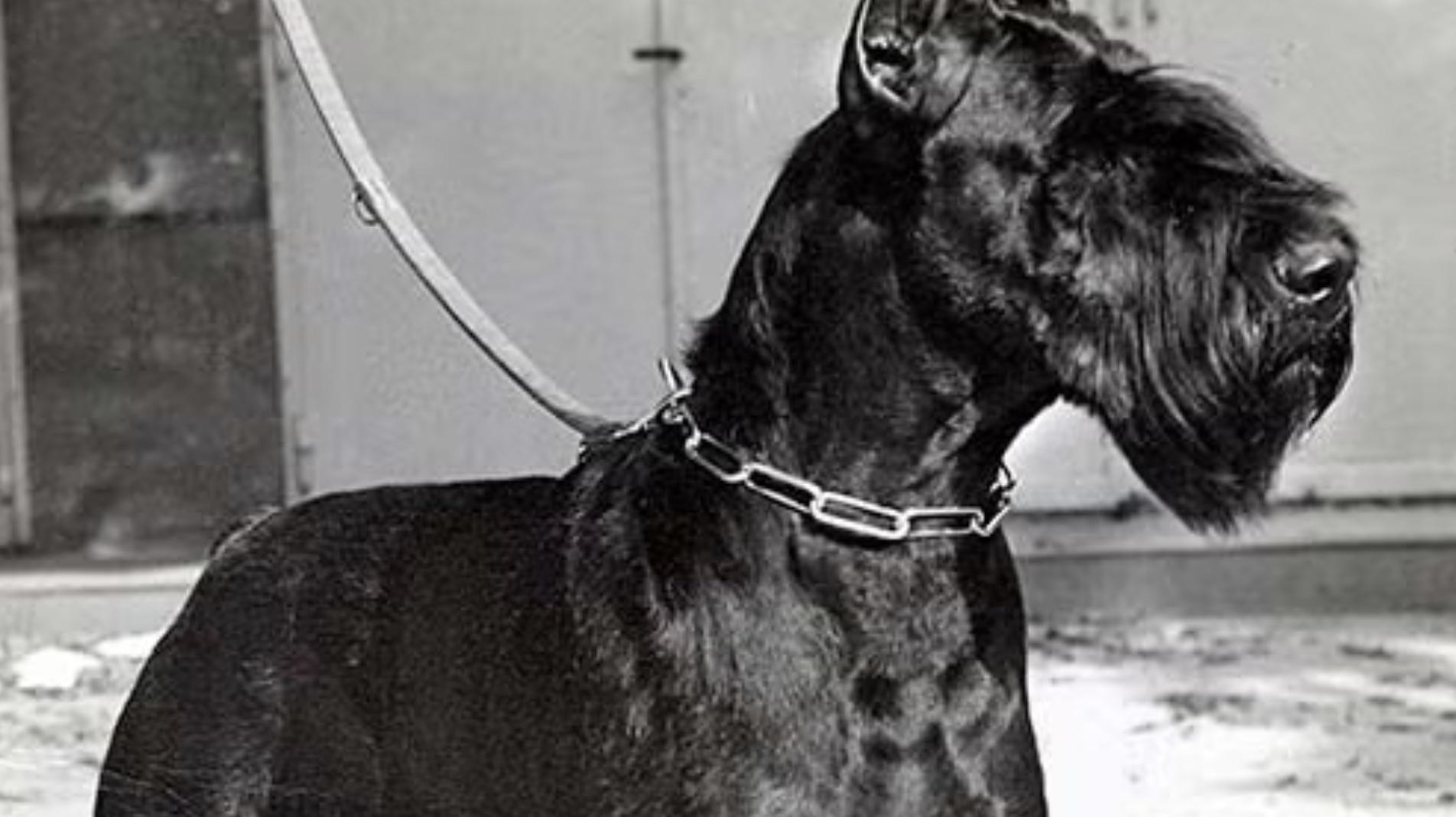
The Giant Schnauzer is a large dog originally bred in Germany for guarding and working. Known for its strong build and thick, wiry coat, this breed is highly intelligent, protective, and energetic. It makes excellent guard dogs and companions for active individuals.
- Region of Habitat: Originated in Germany, now found in homes and working roles globally.
- Scientific Name:Canis lupus familiaris
- Feeding Habits: Omnivorous, requiring a diet rich in protein and nutrients for their active lifestyle.
- What Sound They Make: Giant Schnauzers have a deep, commanding bark, often used for guarding or alerting.
Fun Facts
Giant Schnauzers are known for their intelligence and trainability, often excelling in obedience training and agility.
They are highly protective of their families and can make excellent working dogs in roles such as police or search-and-rescue. Their thick coat requires regular grooming.
16. Giant Schnoodle

The giant schnoodle is a crossbreed between a Giant Schnauzer and a Poodle. Known for their hypoallergenic coat and affectionate nature, giant schnoodles are highly intelligent, loyal, and great family pets. They are also known for their agility and make excellent companions for active families.
- Region of Habitat: Found globally, particularly as companion pets.
- Scientific Name:Canis lupus familiaris
- Feeding Habits: Omnivorous, requiring a balanced diet rich in protein, vegetables, and healthy fats.
- What Sound They Make: Giant Schnoodles are known for their energetic barking, especially when excited or alerting their owners.
Fun Facts
Giant Schnoodles are a popular hybrid breed due to their friendly temperament and hypoallergenic coat.
They inherit the intelligence of the Poodle and the protective nature of the Giant Schnauzer, making them excellent family pets and great for individuals with allergies.
17. Gibbon
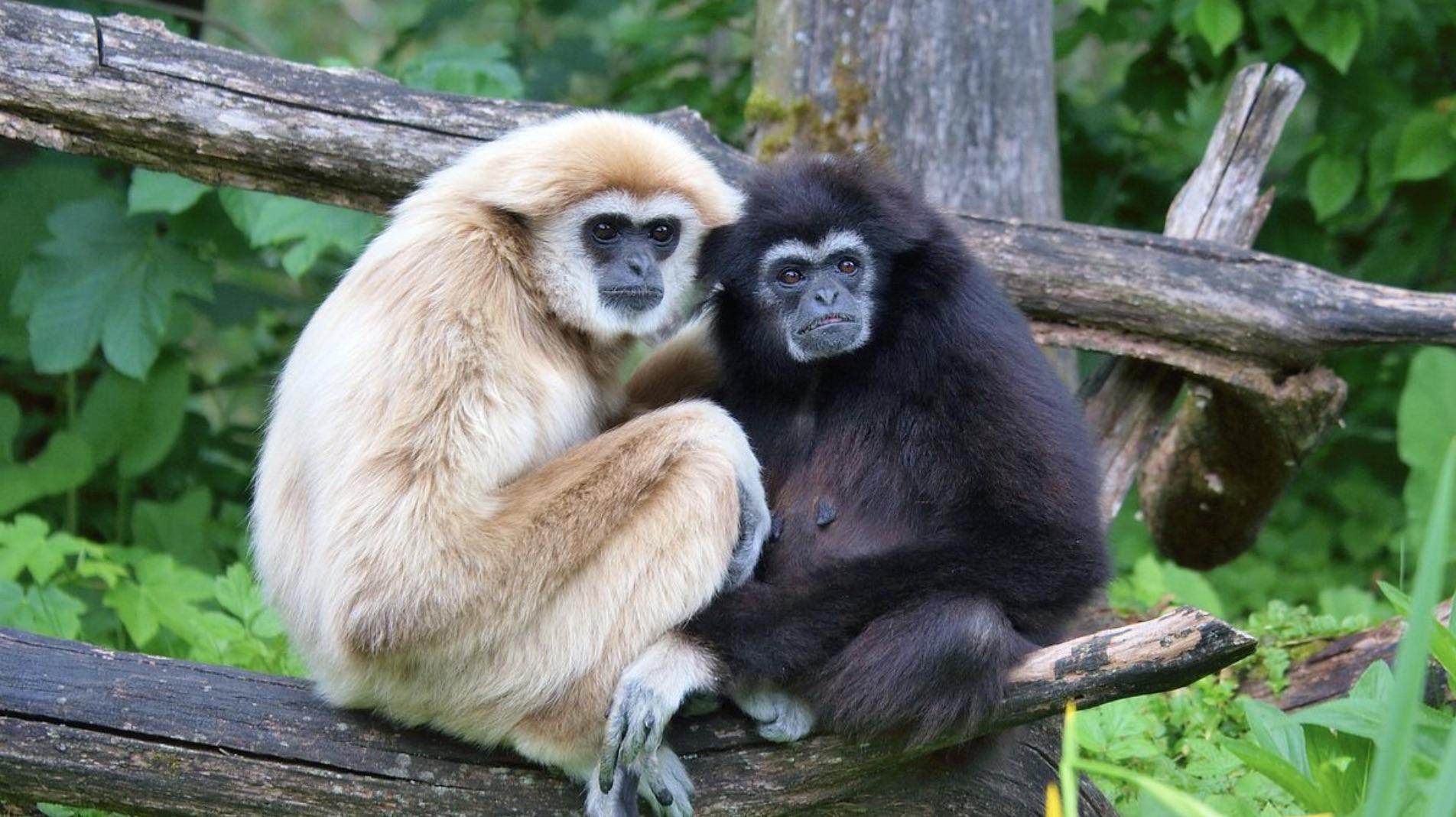
Gibbons are small, agile apes native to Southeast Asia. They are known for their long arms and ability to swing from tree to tree.
They are highly social animals, living in family groups and communicating with loud, melodic songs. Gibbons are primarily frugivorous but also consume leaves and insects.
- Region of Habitat: Southeast Asia, including forests in countries like Thailand, Malaysia, and Indonesia.
- Scientific Name:Hylobatidae
- Feeding Habits: Primarily frugivorous, also eating leaves and insects.
- What Sound They Make: Gibbons are known for their loud, melodious vocalizations, which they often use to communicate with other members of their group.
Fun Facts
Gibbons are excellent brachiators, meaning they swing from tree to tree with incredible agility using their long arms.
Their songs can be heard over long distances and are an important part of their social structure. They are monogamous, often forming long-term pair bonds.
18. Giraffe
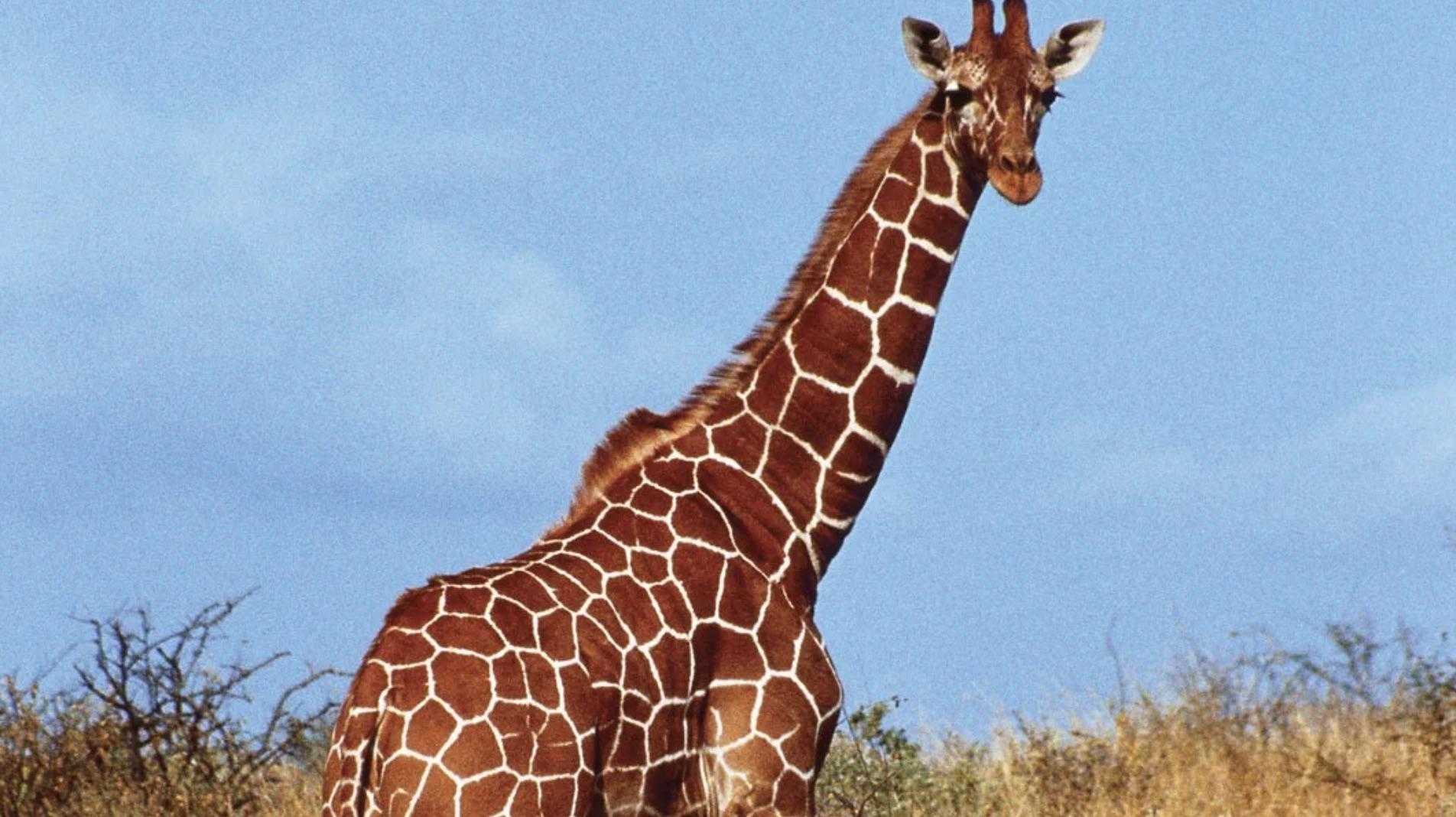
The Giraffe is the tallest land mammal, native to sub-Saharan Africa. Known for their long necks and legs, giraffes are herbivores that feed primarily on the leaves of trees, especially acacia.
They have a unique walking pattern, moving both legs on the same side of their body simultaneously.
- Region of Habitat: Sub-Saharan Africa, particularly in savannas and open woodlands.
- Scientific Name:Giraffa camelopardalis
- Feeding Habits: Herbivorous, feeding primarily on leaves, especially from acacia trees.
- What Sound They Make: Giraffes are mostly silent but can make low humming or grunting sounds, particularly when communicating with other giraffes.
Fun Facts
Giraffes have a remarkable ability to communicate using infrasound, a frequency below human hearing.
Their long necks are not only for reaching high branches but also play a role in male giraffes’ “necking” fights, where they swing their necks to land powerful blows.
19. Greater Bilby
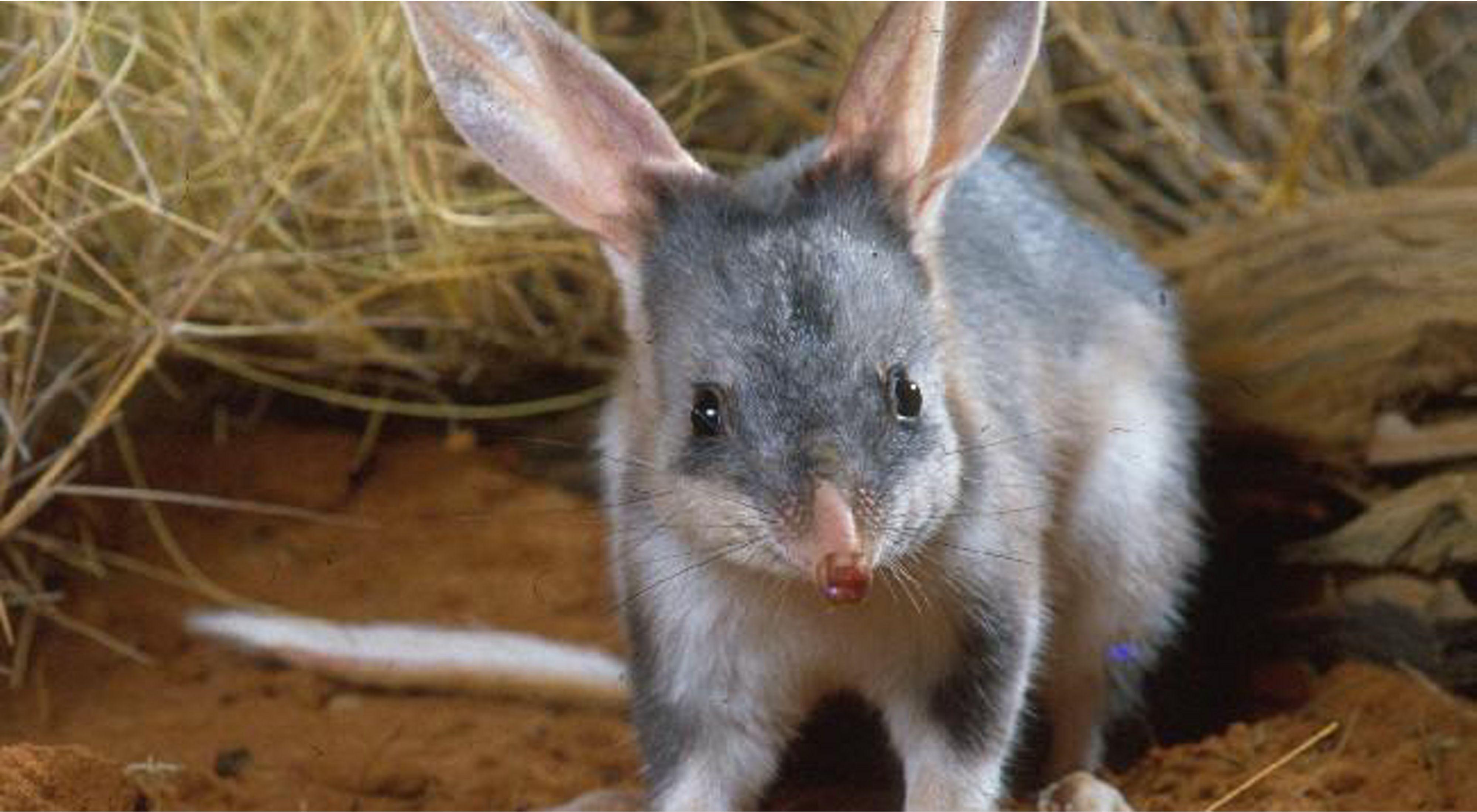
The Greater Bilby is a nocturnal marsupial native to Australia. Known for their long ears and large burrowing habits, they are important for their ecosystem as they dig deep burrows that provide shelter for other animals. Bilbies are omnivorous, feeding on insects, small plants, and seeds.
- Region of Habitat: Australia, particularly in arid and semi-arid regions.
- Scientific Name:Macrotis lagotis
- Feeding Habits: Omnivorous, feeding on insects, small plants, and seeds.
- What Sound They Make: Greater Bilbies make soft, high-pitched squeaks and hisses, particularly when startled or communicating with each other.
Fun Facts
The Greater Bilby is sometimes called the “rabbit-eared bandicoot” due to its long, distinctive ears.
Bilbies are excellent diggers and spend most of their time underground. They are considered endangered due to habitat loss and predation by introduced species such as foxes and cats.
20. Glechon

The Glechon is a hybrid dog breed resulting from the cross between a Beagle and a Bichon Frisé. These small, friendly dogs are known for their loyalty and social nature. They are typically good with families and other pets and are relatively easy to train.
- Region of Habitat: Found globally as a companion pet, particularly in homes.
- Scientific Name:Canis lupus familiaris
- Feeding Habits: Omnivorous, typically consuming high-quality dog food that includes meat and vegetables.
- What Sound They Make: Glechons make friendly, playful barks, especially when excited or seeking attention.
Fun Facts
Glechons are known for their affectionate and playful nature. Despite being a small breed, they often have a big personality and enjoy being around people.
They inherit the friendly demeanor of the Beagle and the sweet, laid-back nature of the Bichon Frisé.
Some More Unusual Mammals with “G”
21. Glen Of Imaal Terrier
22. Goat
23. Goberian
24. Goldador
25. Golden Dox
26. Golden Jackal
27. Golden Lion Tamarin
28. Golden Mole
29. Golden Newfie
30. Golden Pyrenees
31. Golden Retriever
32. Golden Saint
33. Golden Shepherd
34. Golden-Crowned Flying Fox
35. Goldendoodle
36. Gopher
37. Goral
38. Gordon Setter
39. Gorilla
40. Grasshopper Mouse
41. Gray Fox
42. Great Dane
43. Great Danoodle
44. Great Pyrenees
45. Greater Swiss Mountain Dog
46. Greenland Dog
47. Grey Mouse Lemur
48. Grey Seal
49. Greyhound
50. Griffonshire
51. Grizzly Bear
52. Groenendael
53. Ground Squirrel
54. Guinea Pig
55. Gundi
56. Gaur
57. Grison
58. Gemsbok
59. Guanaco
Wrapping It Up
Mammals with G names represent amazing diversity in the animal kingdom.
From gentle giants like Giraffes to tiny creatures like Gerbils, these animals have adapted to life in many different places.
Some serve as working animals and companions to humans, while others live in wild habitats across the world.
Whether they bark, growl, sing, or stay silent, each brings something unique to their environment. Learning about these creatures helps us better understand the natural world.
Remember, getting to know animals is the first step toward protecting their future!
If you’re interested in more informative animal & wildlife content, feel free to click here and explore other blogs you might enjoy!

